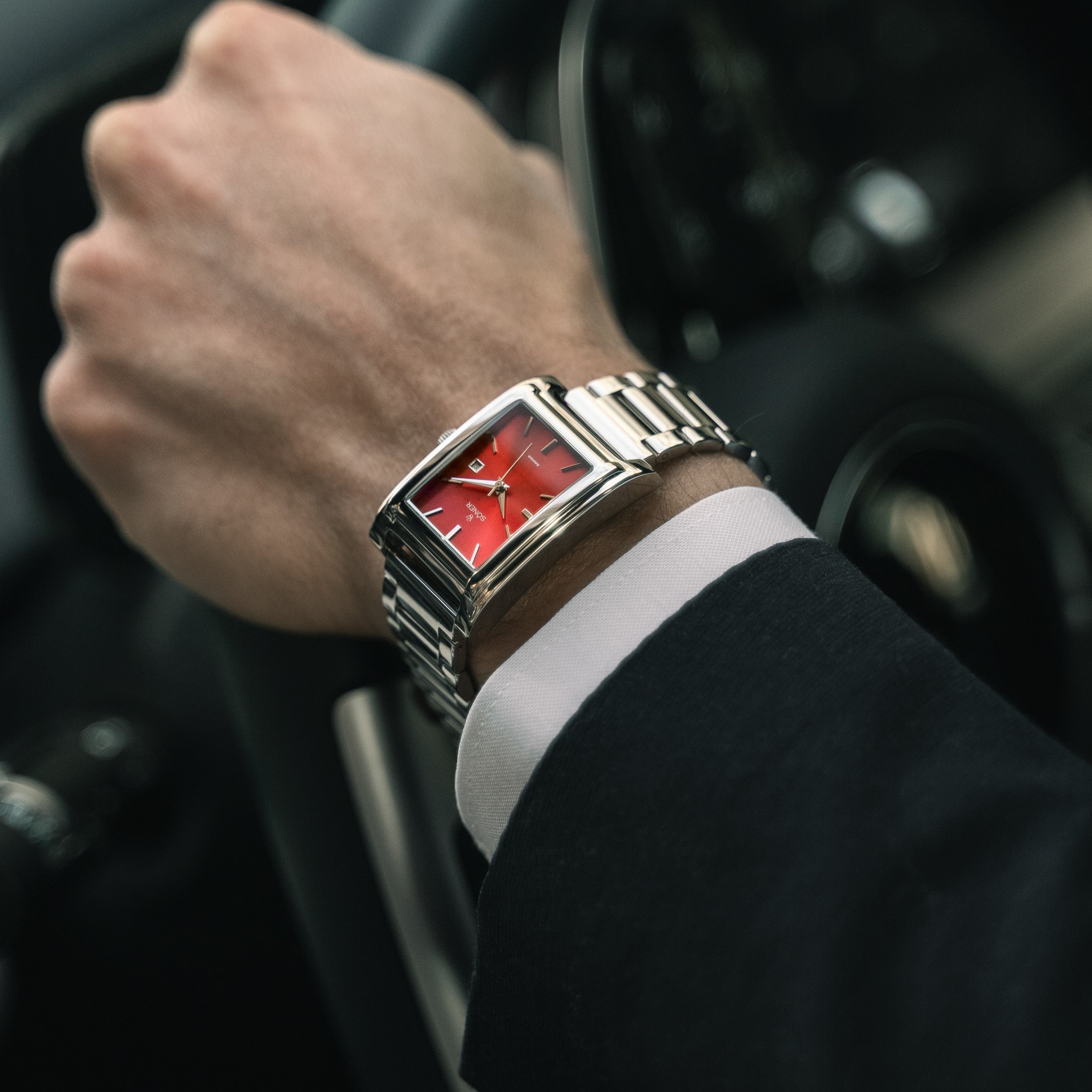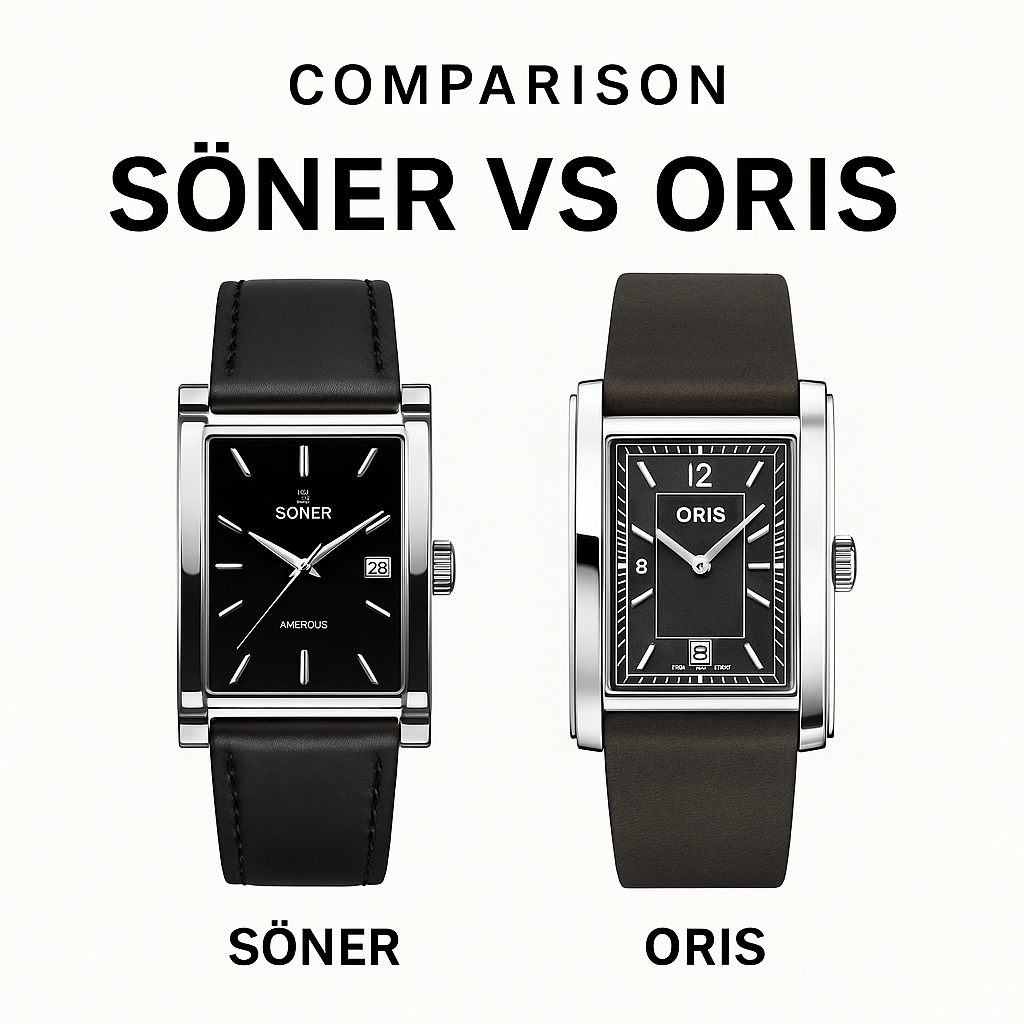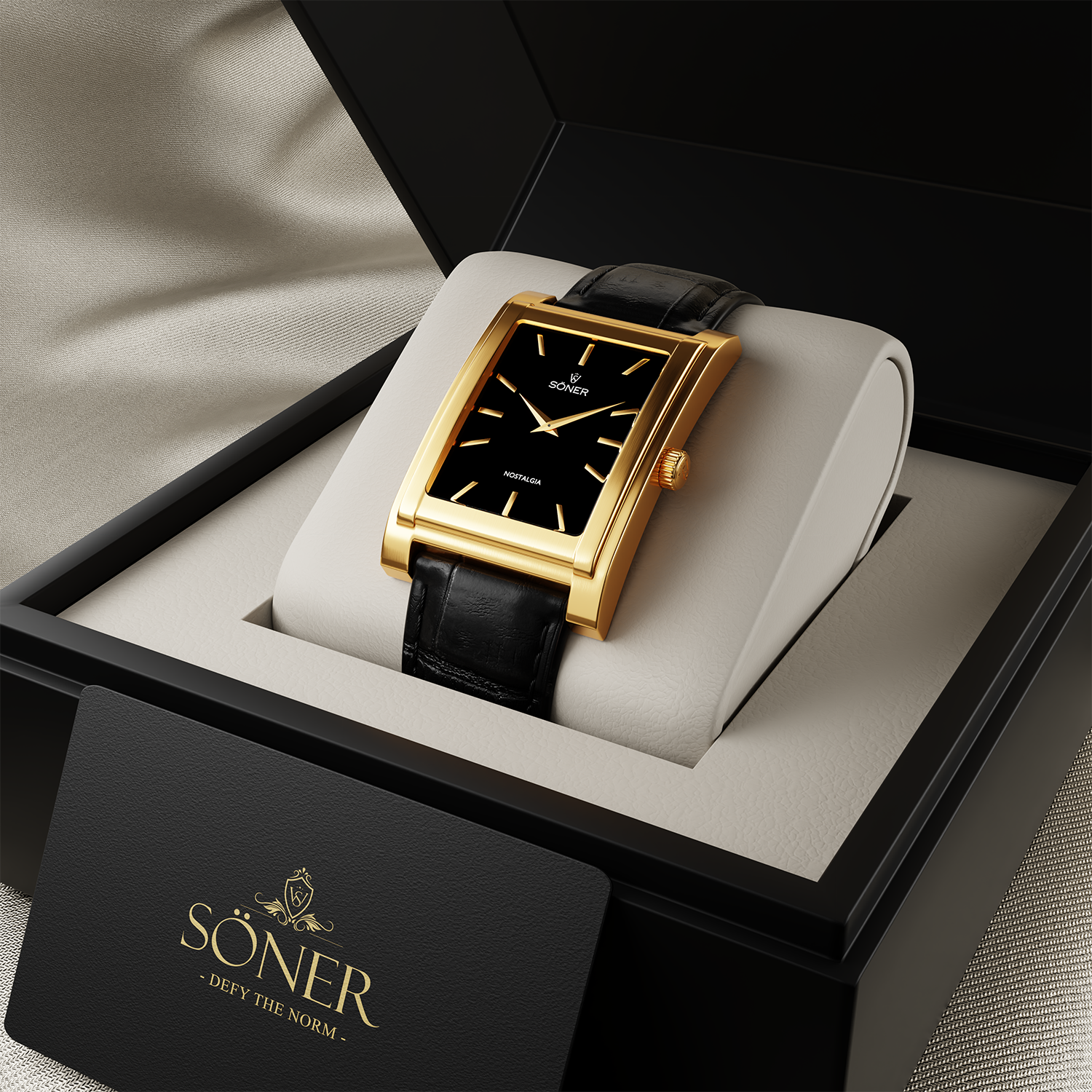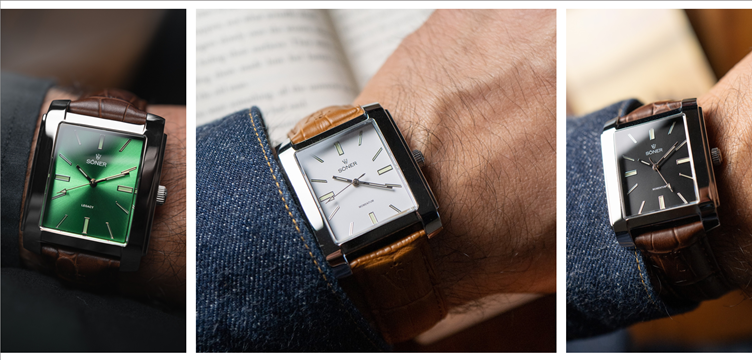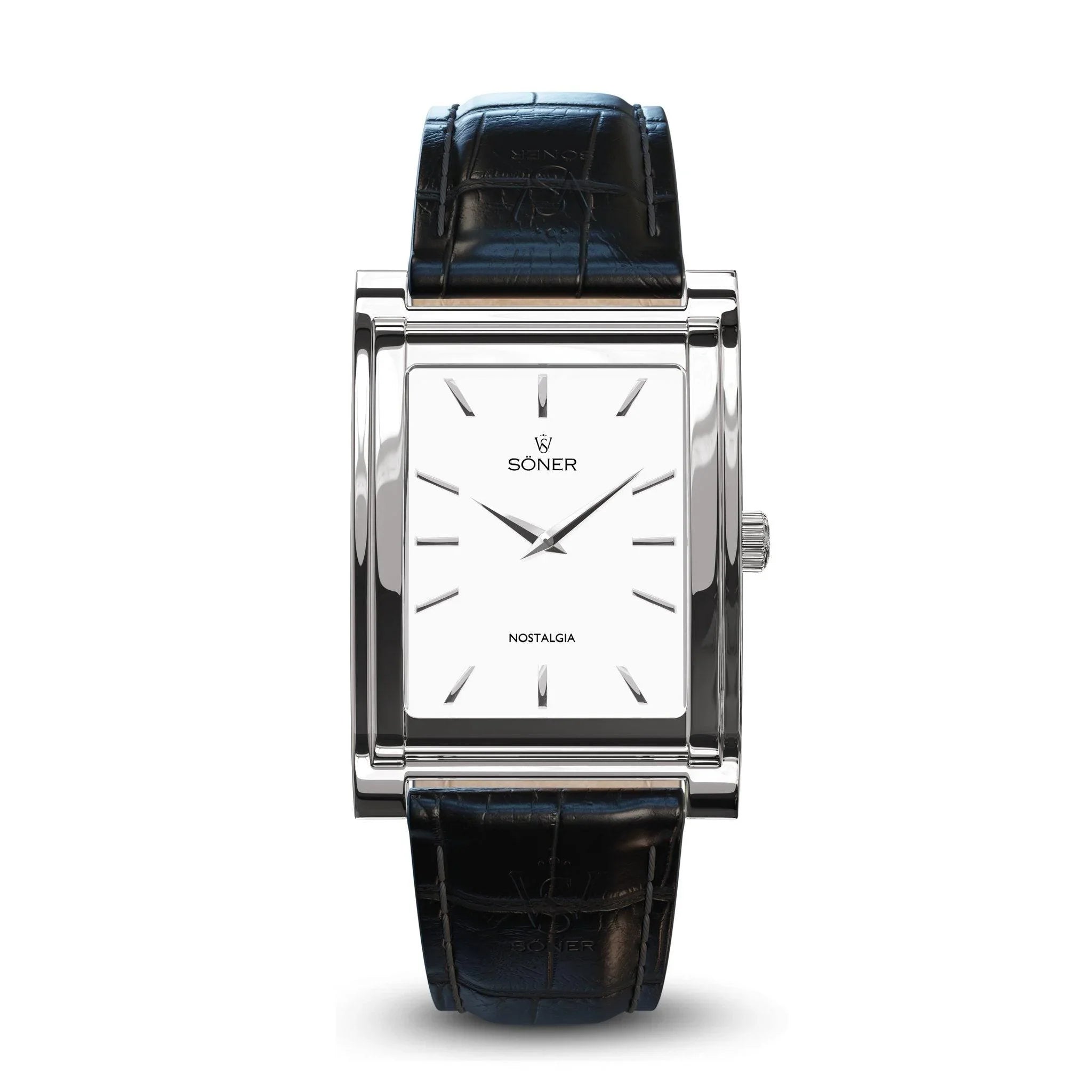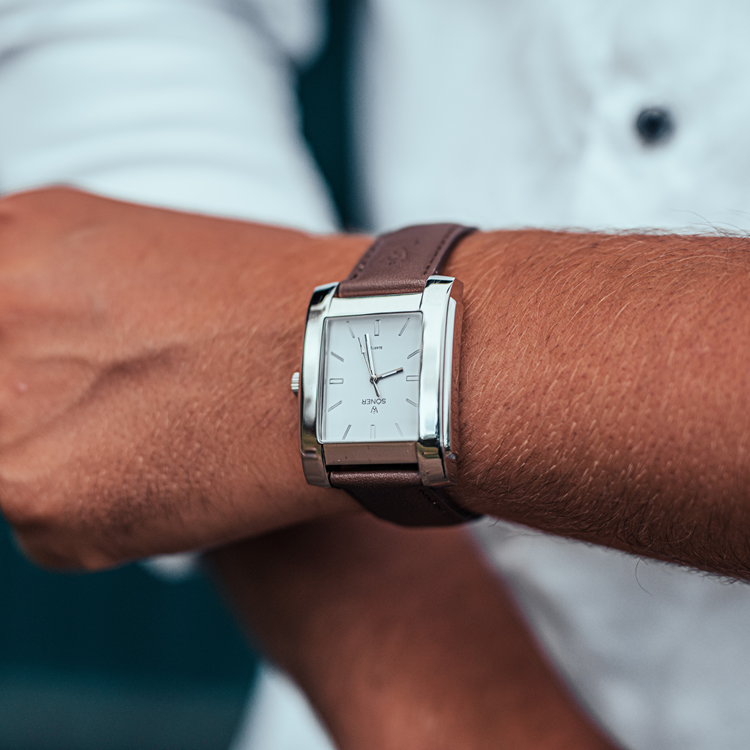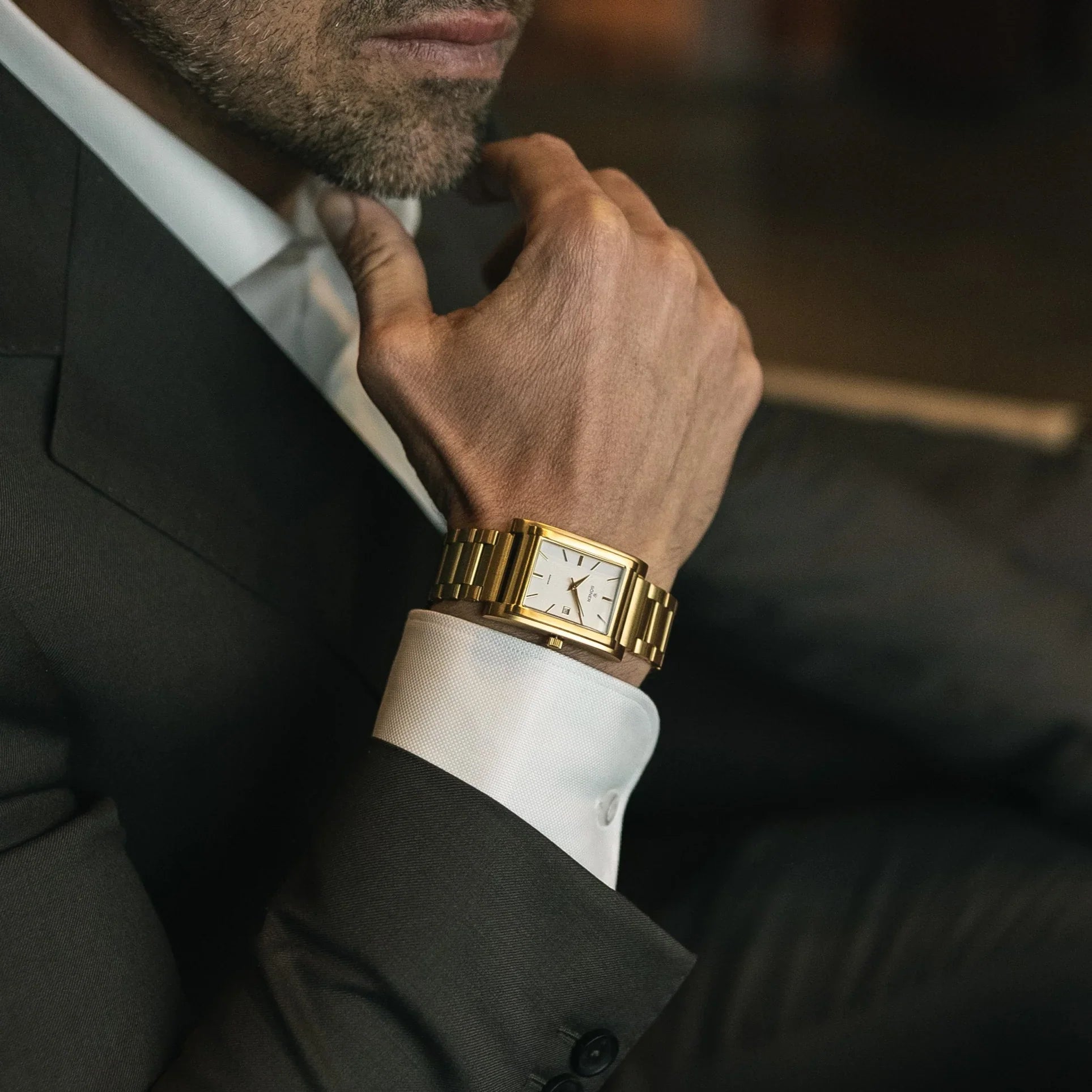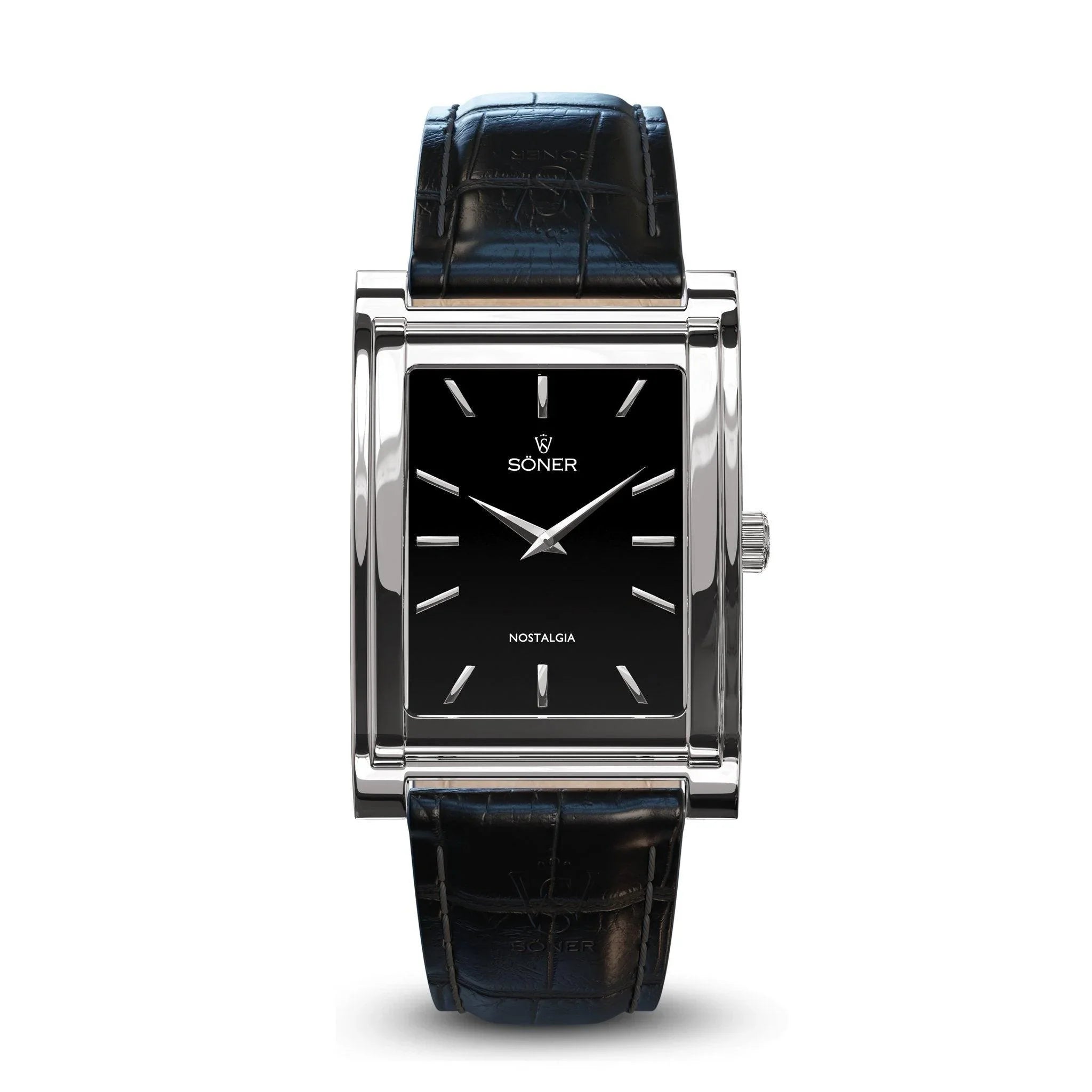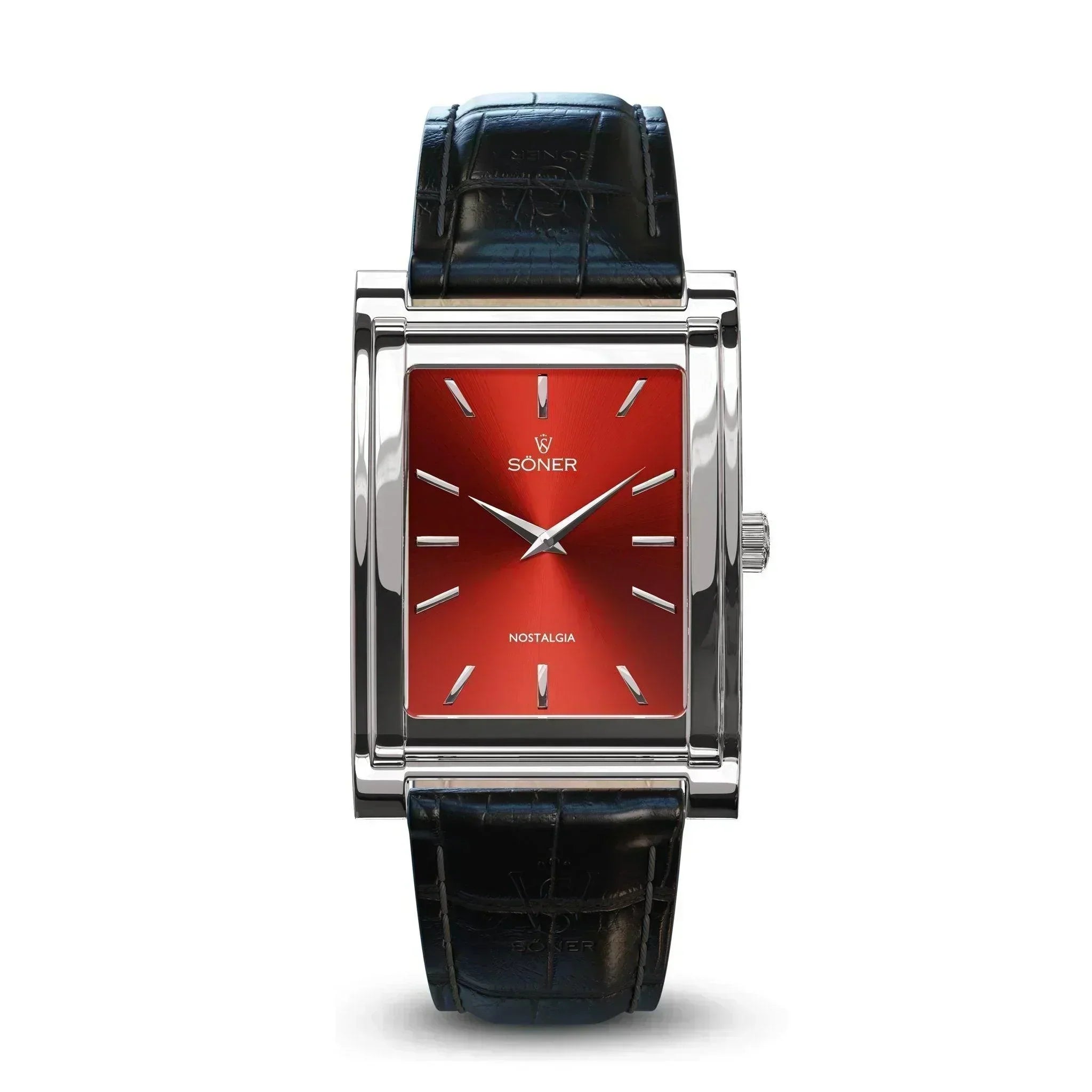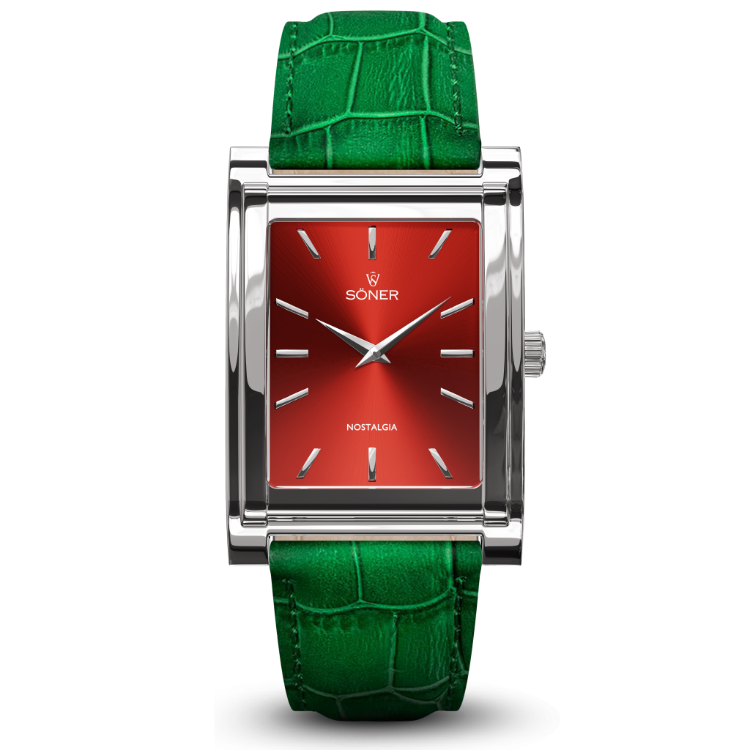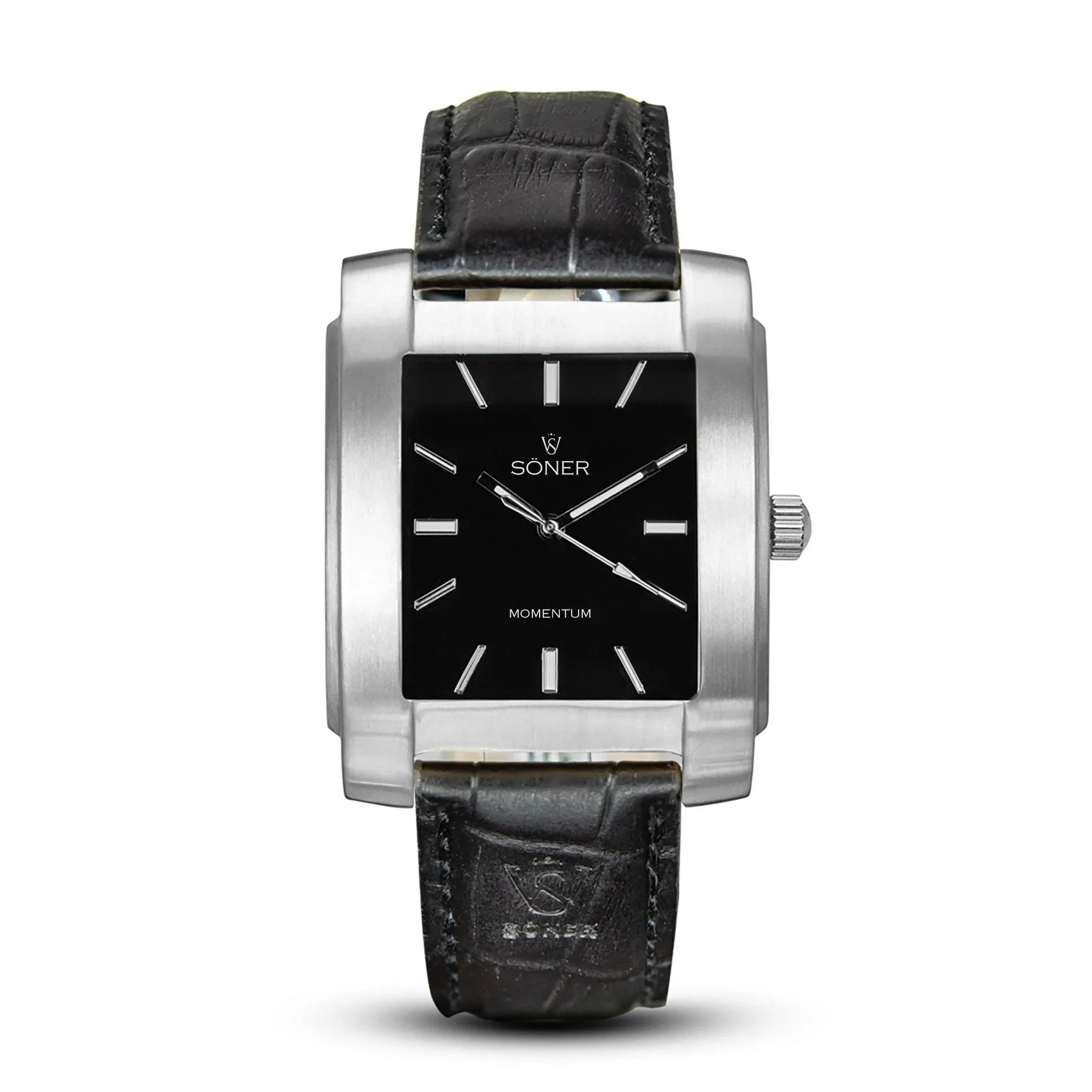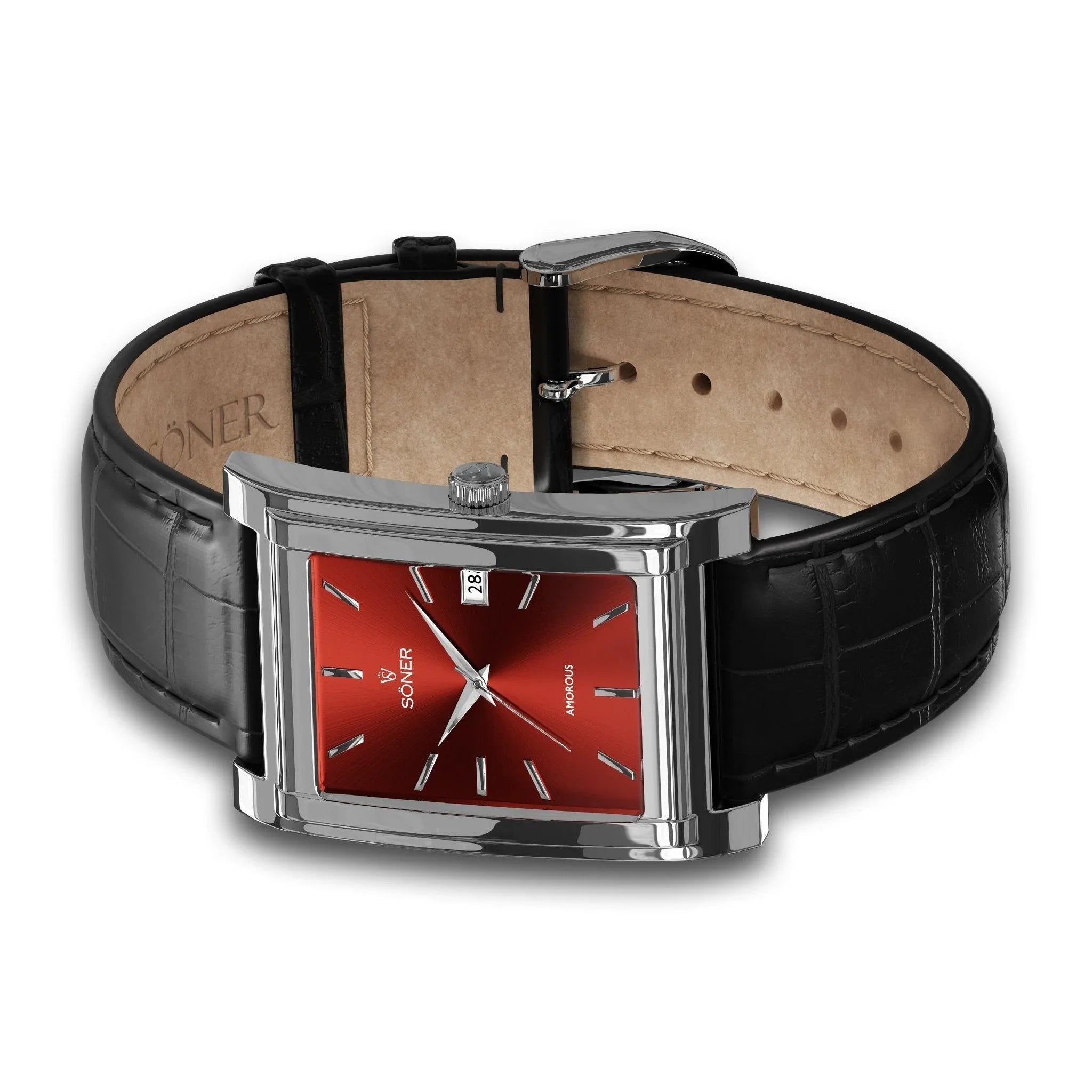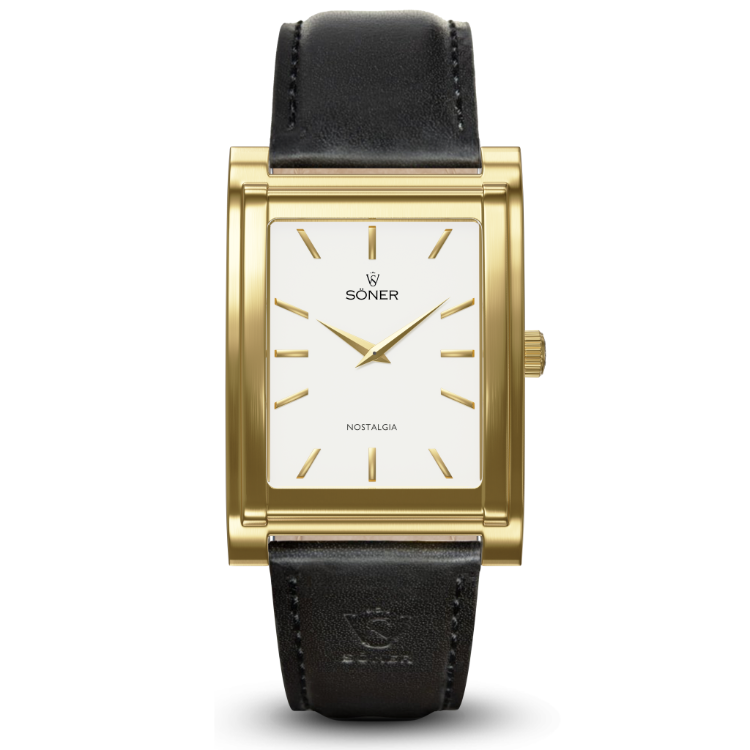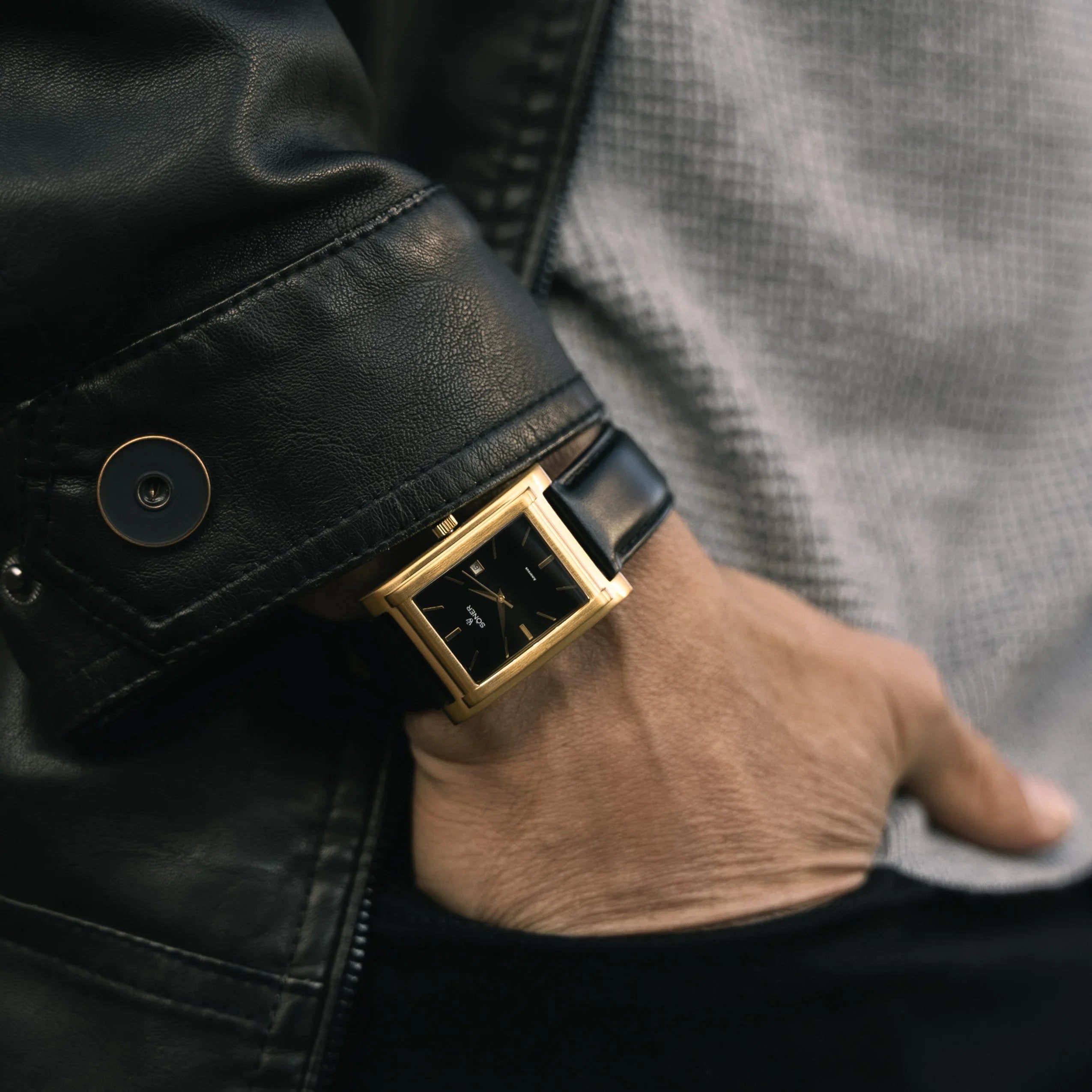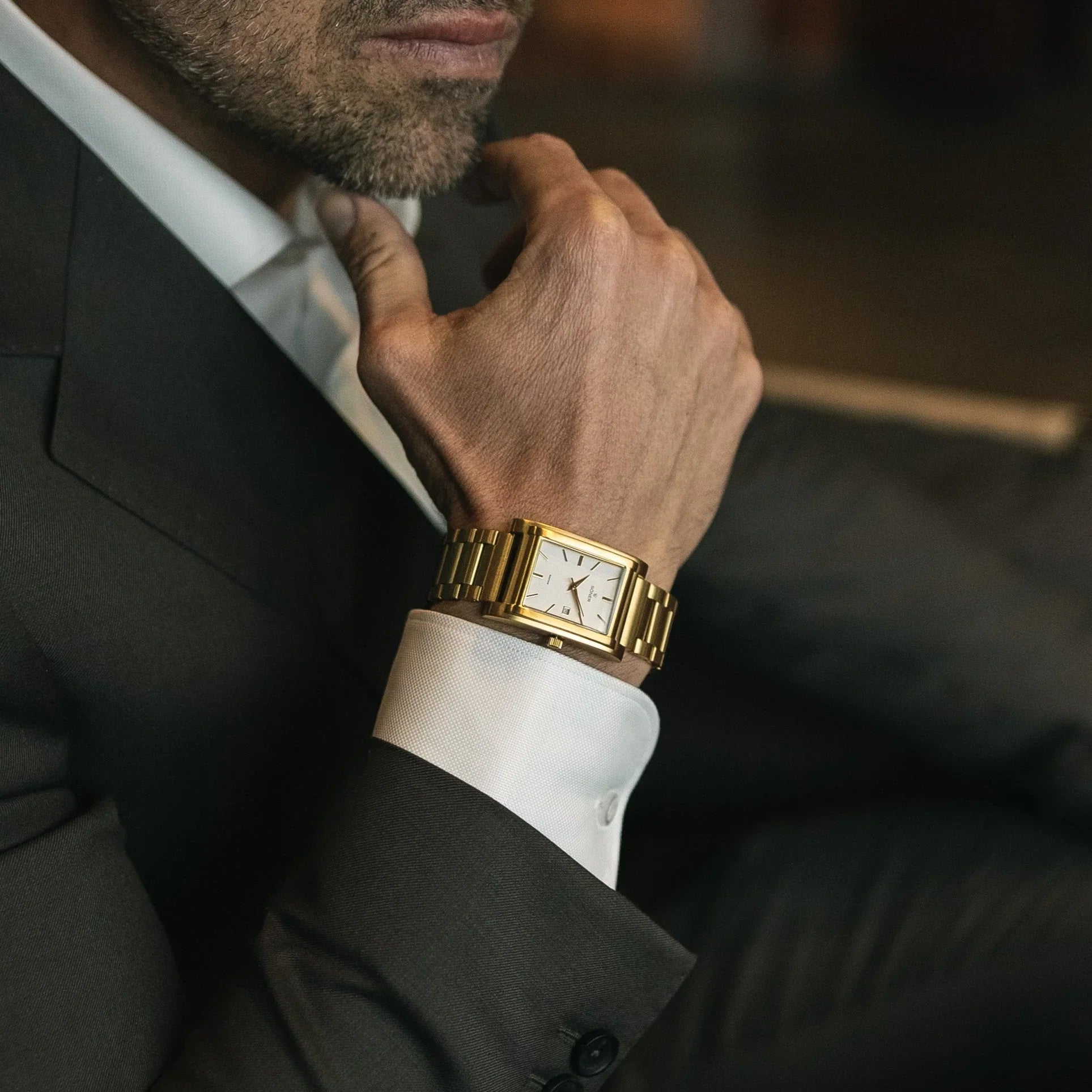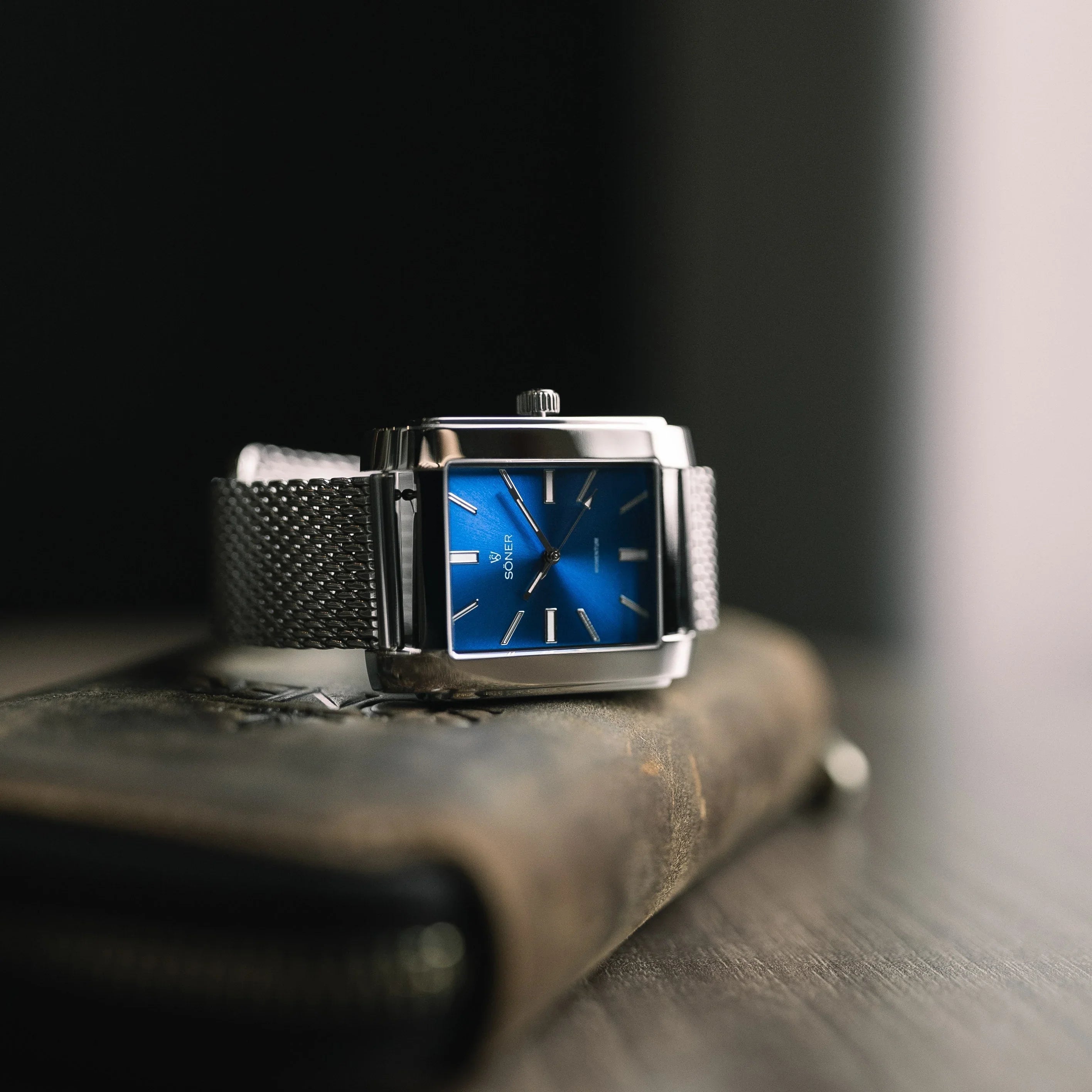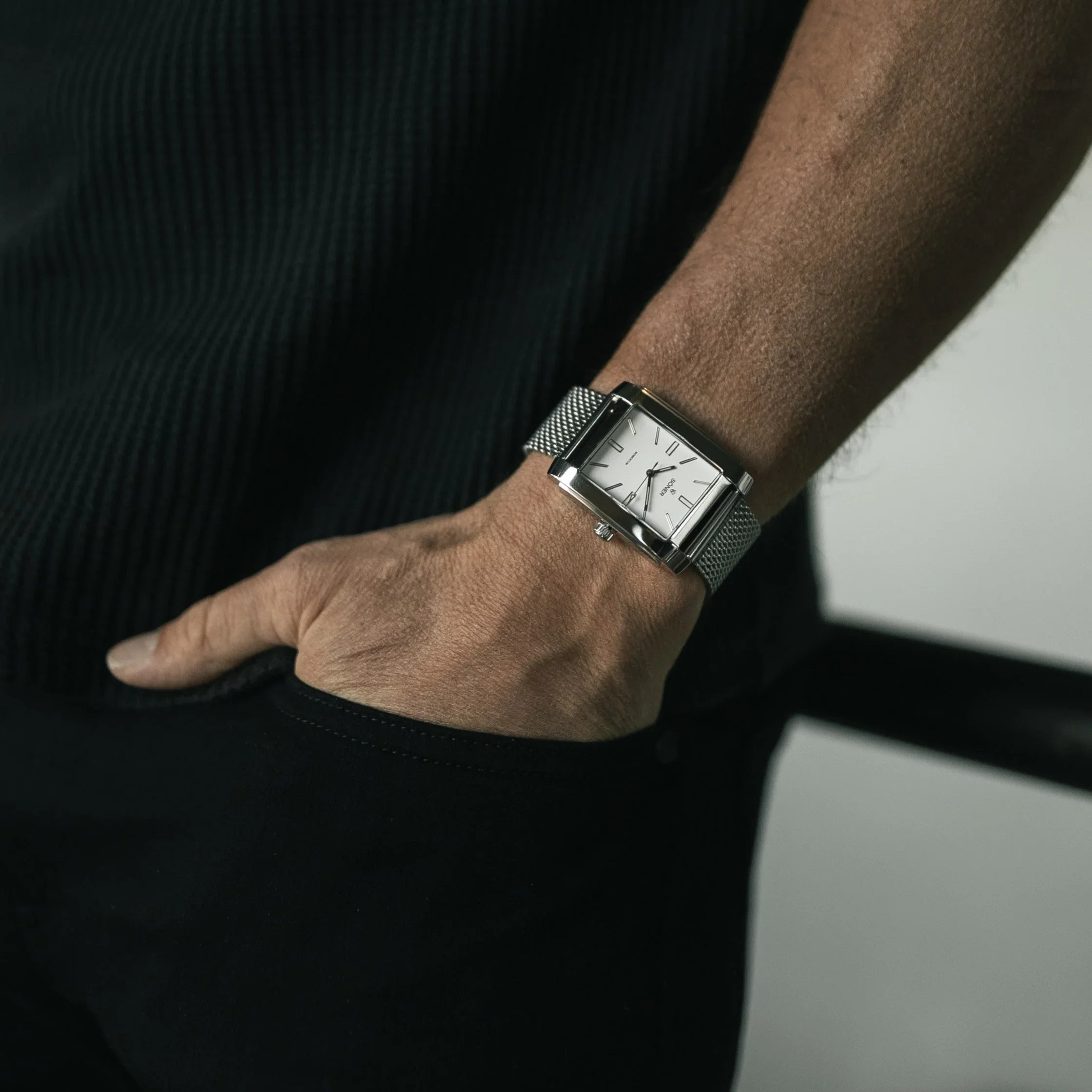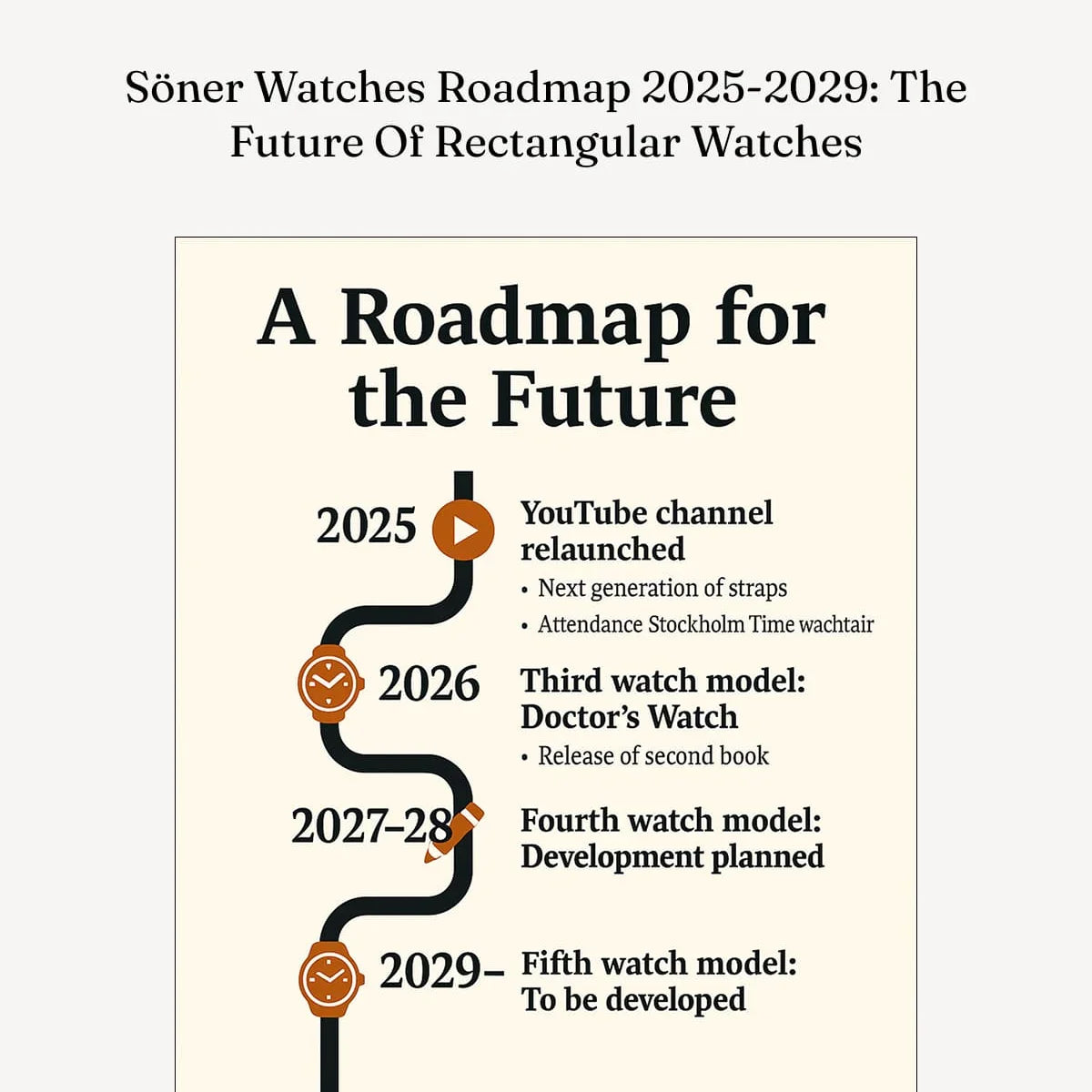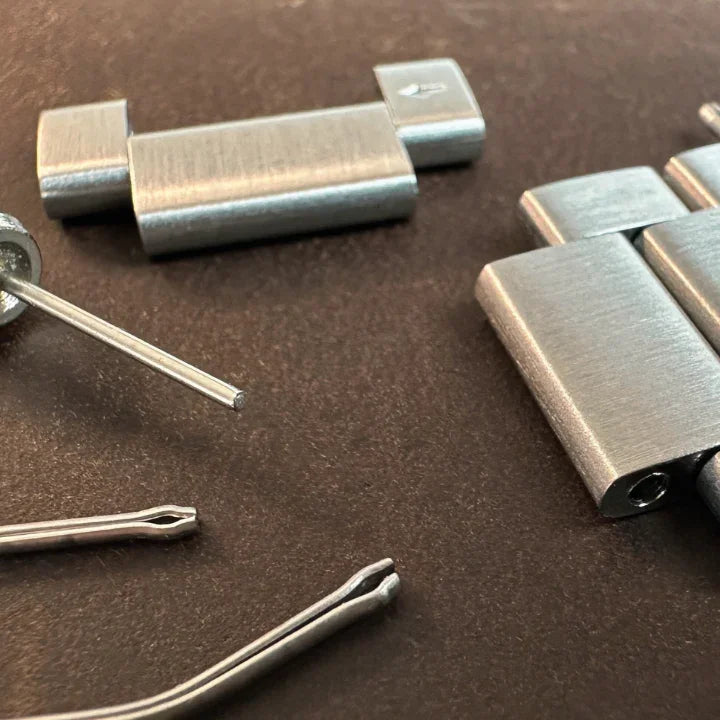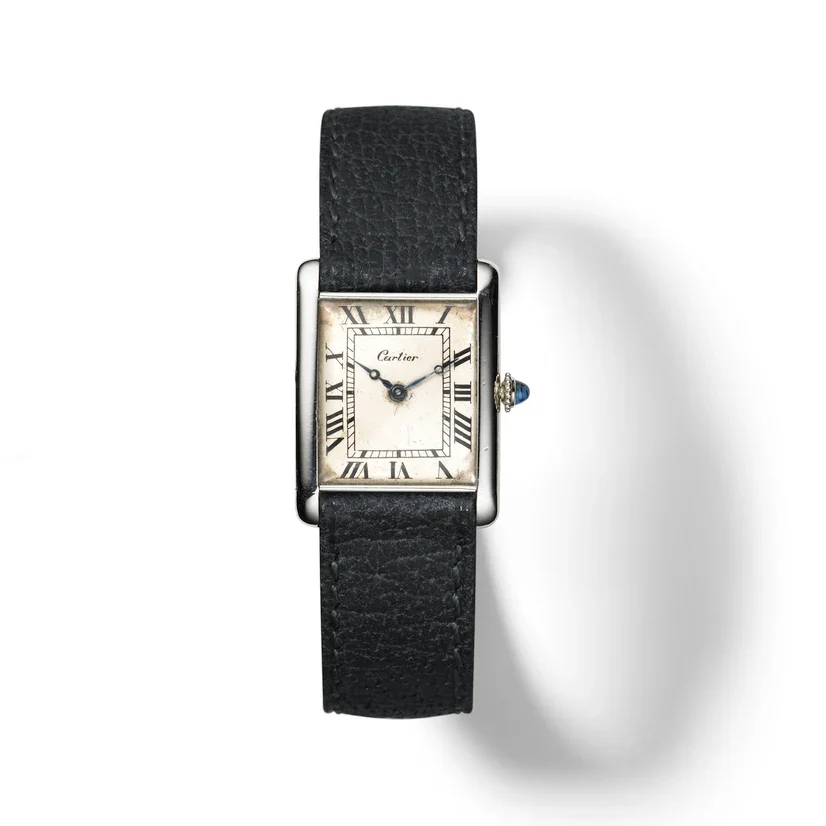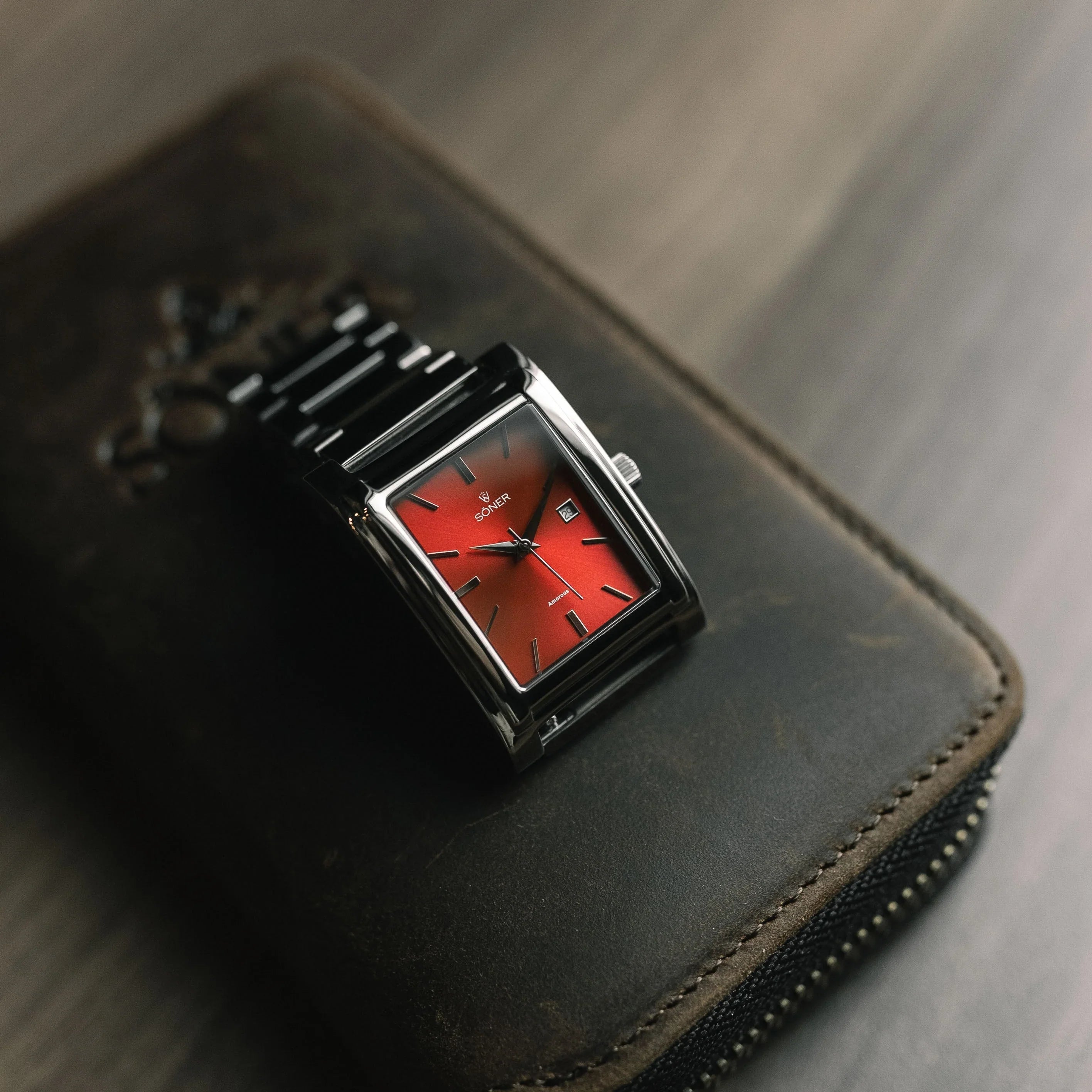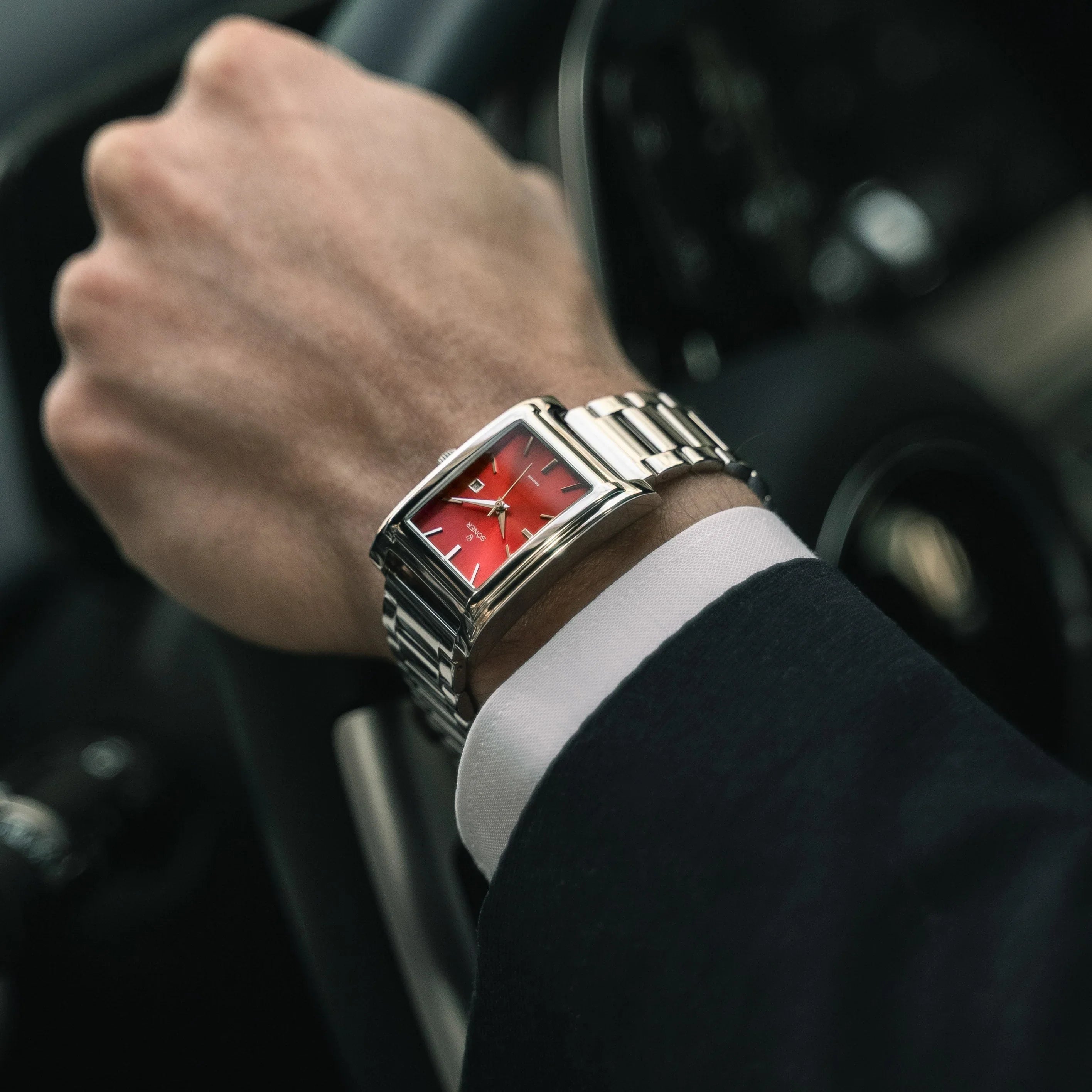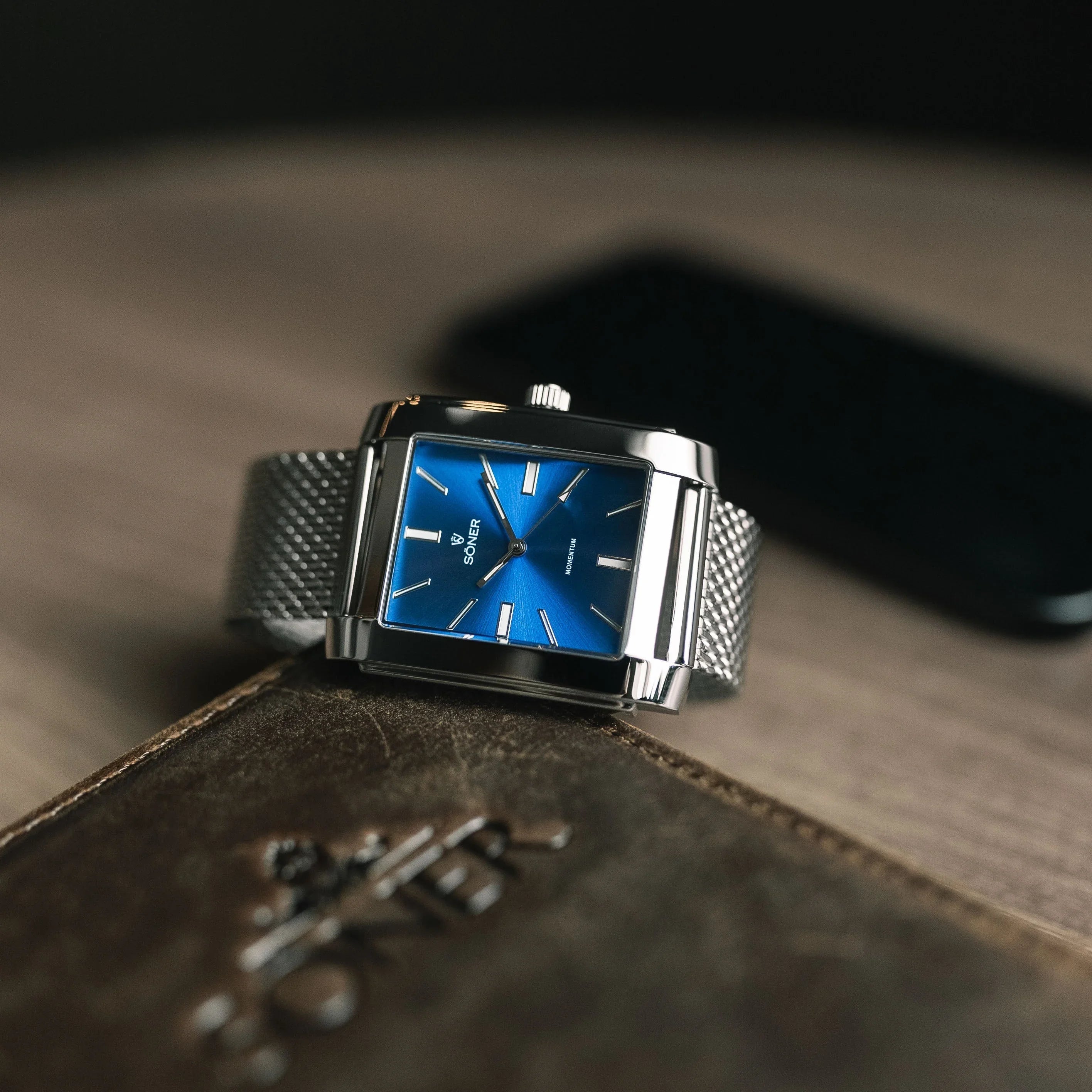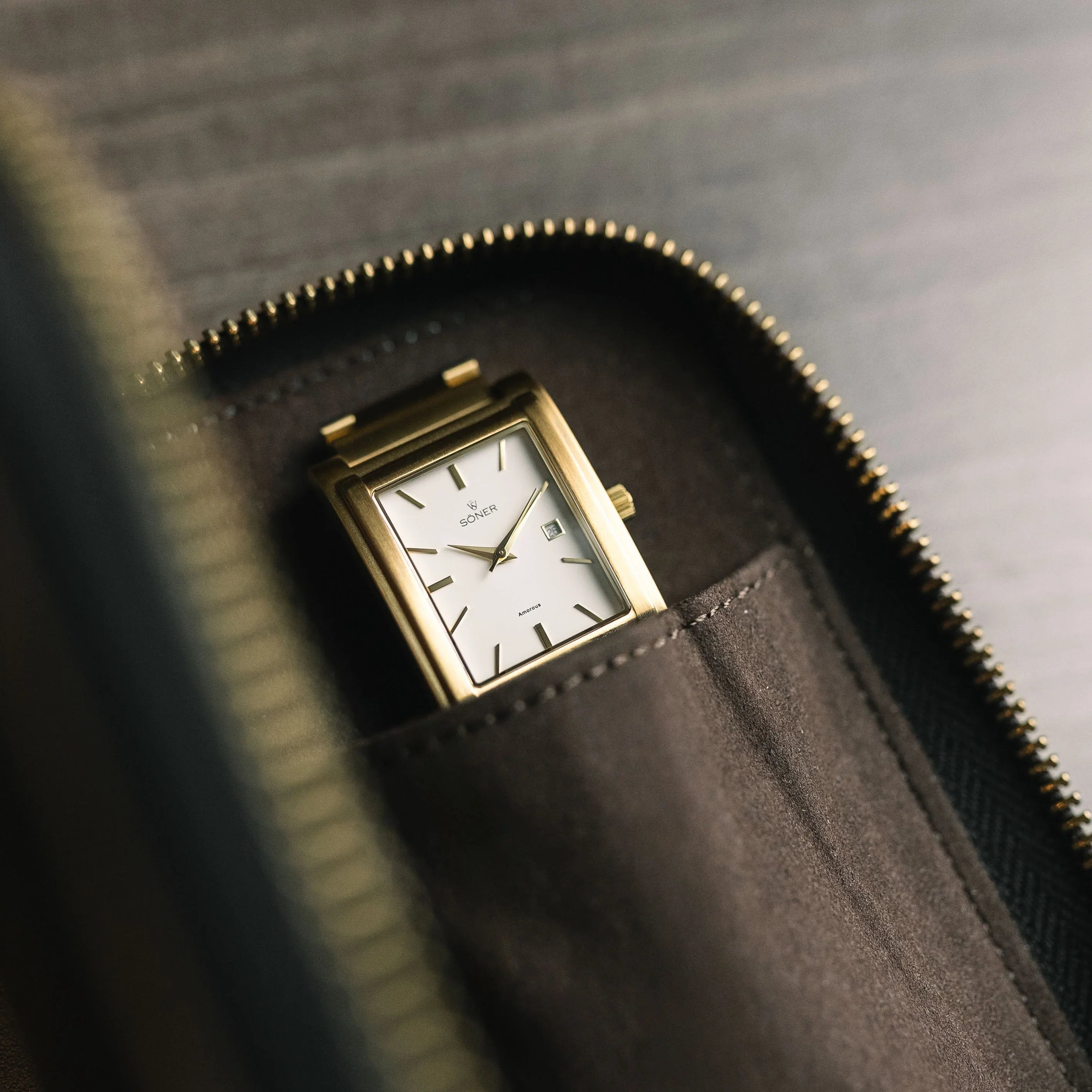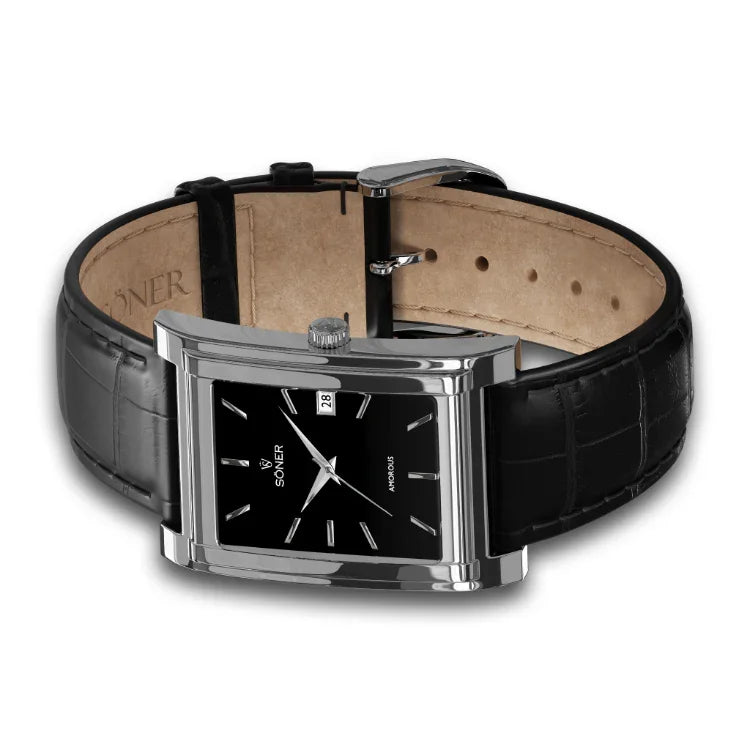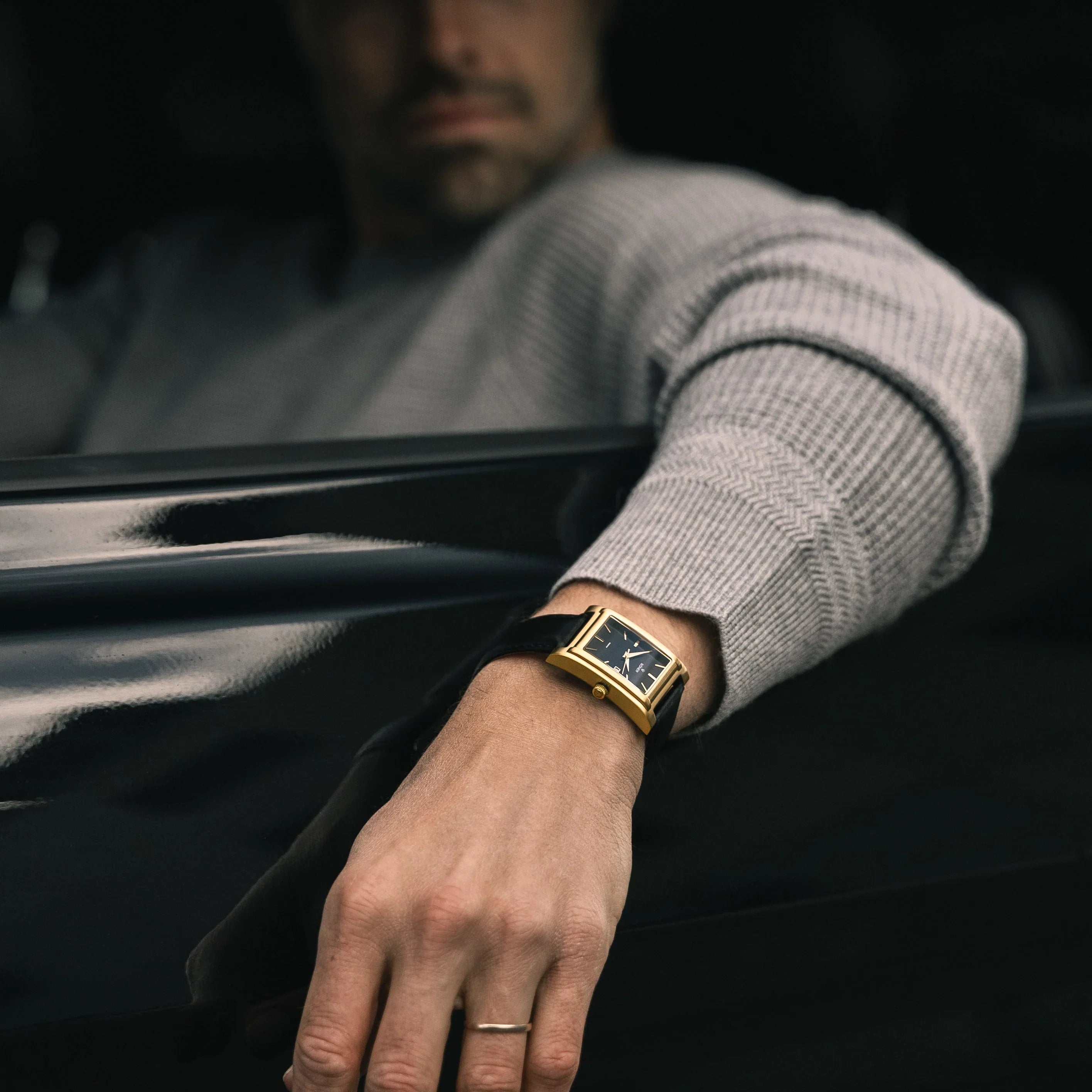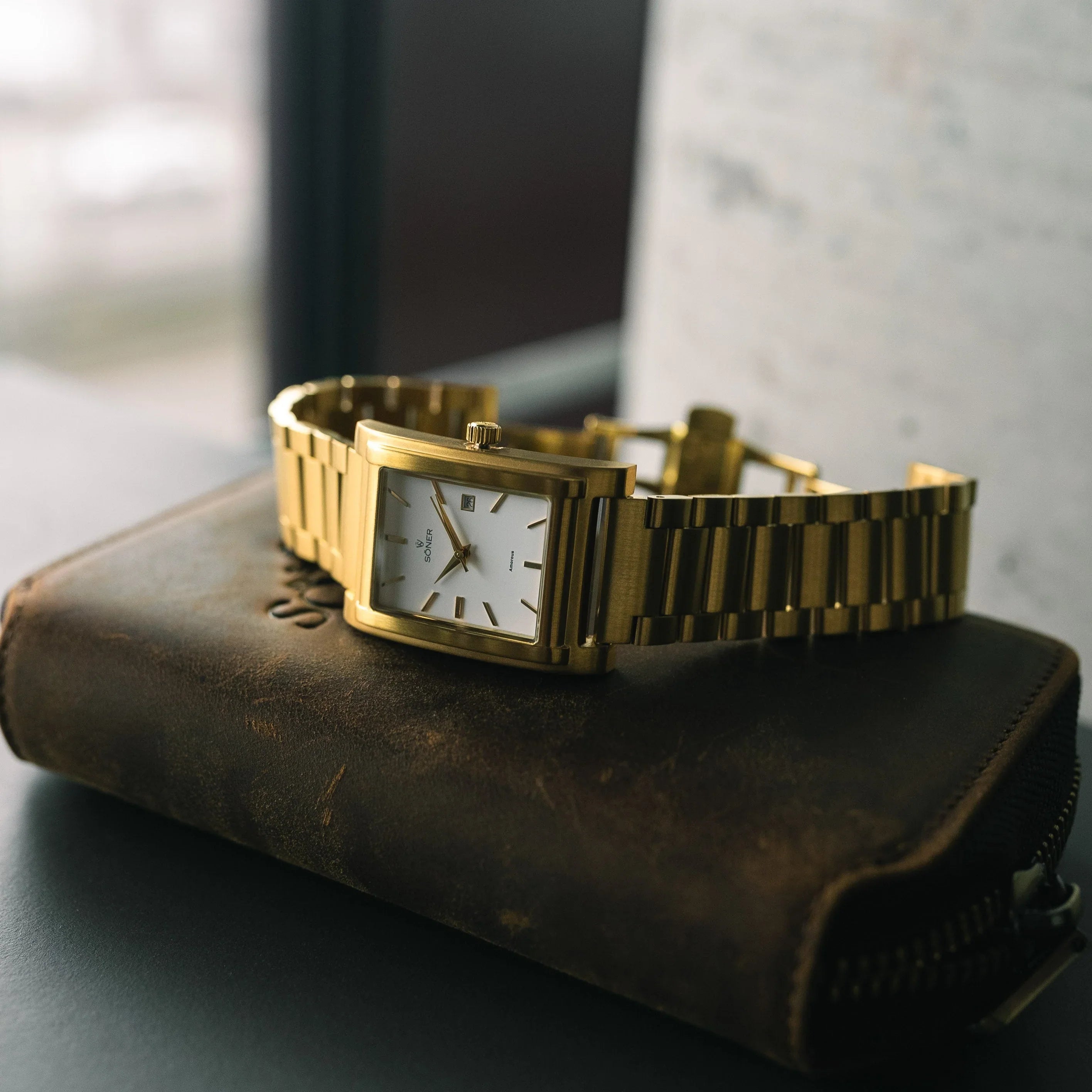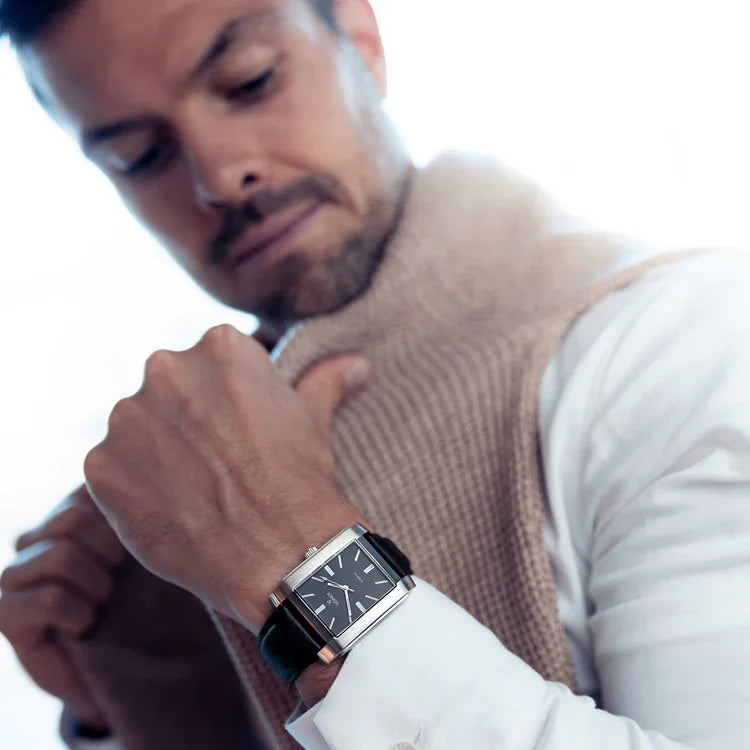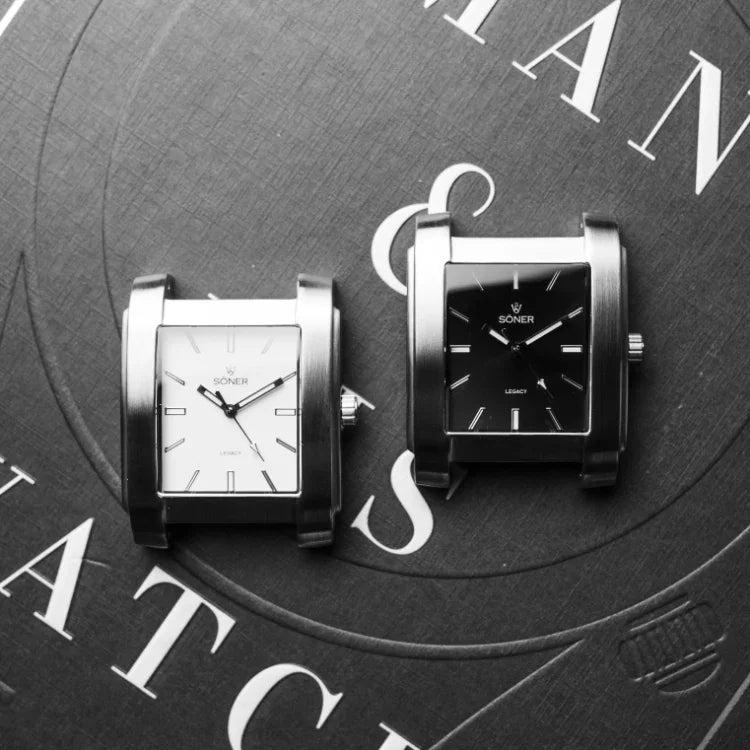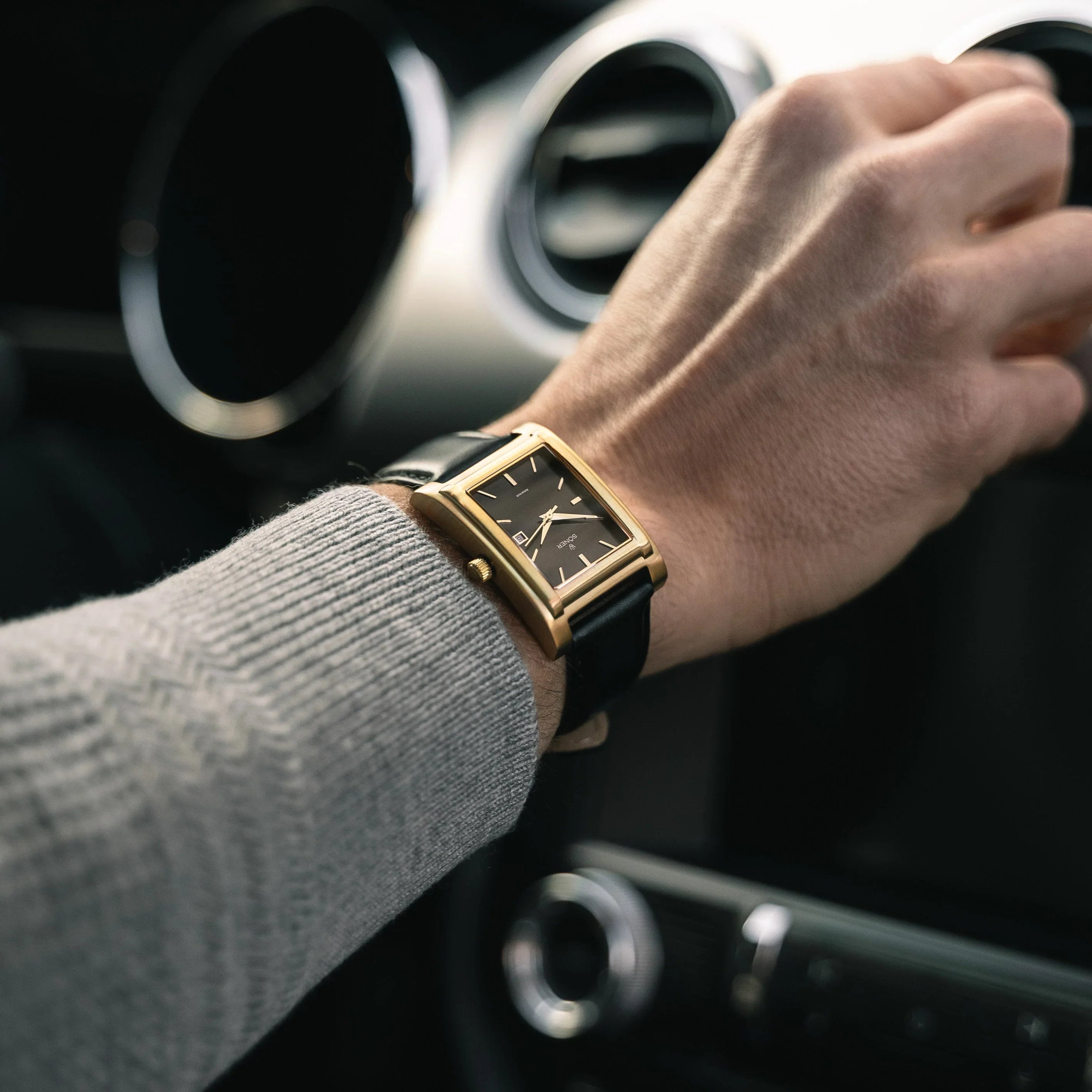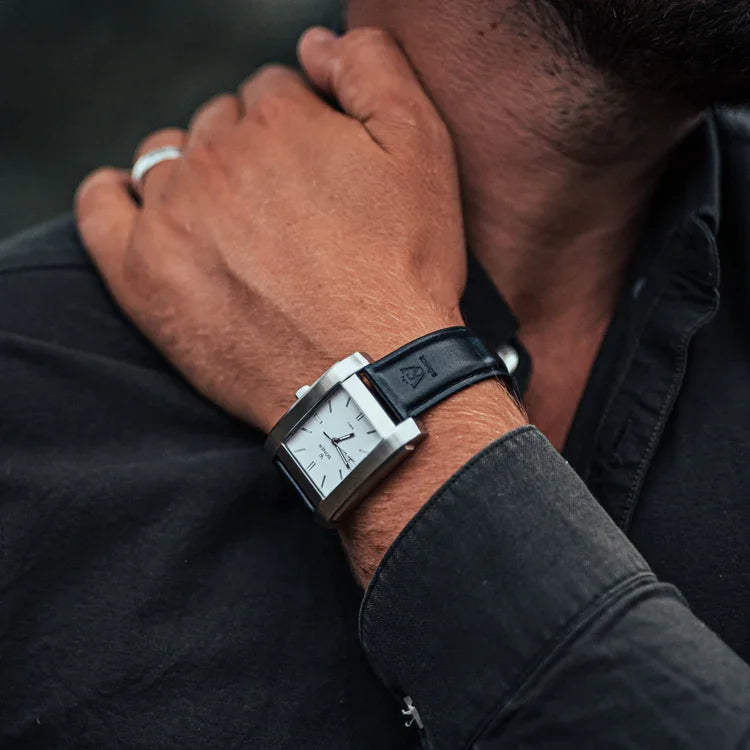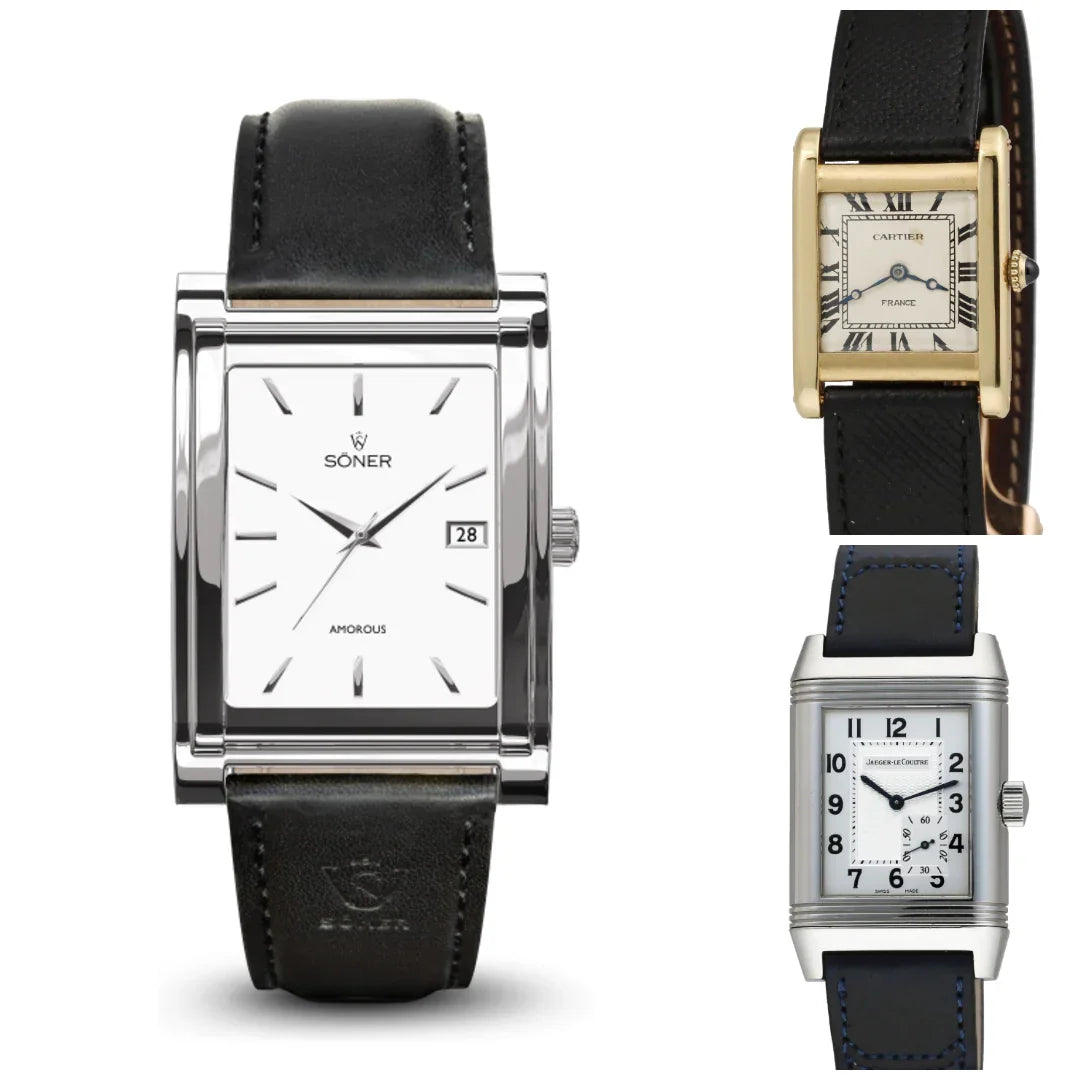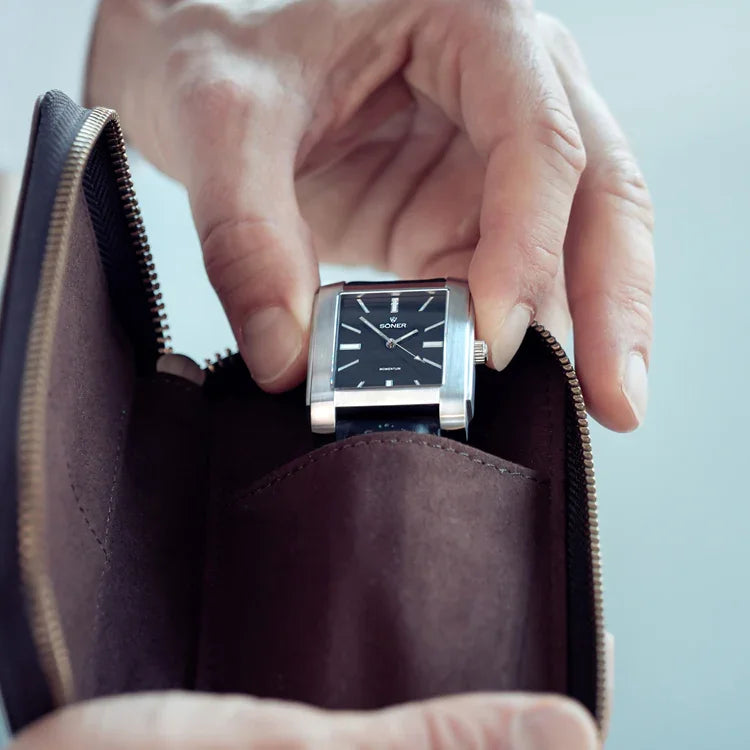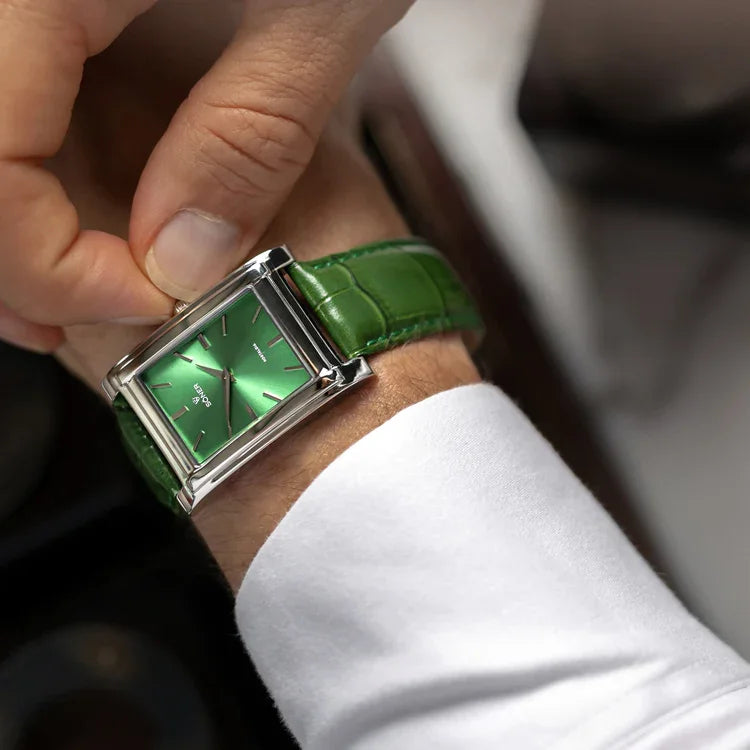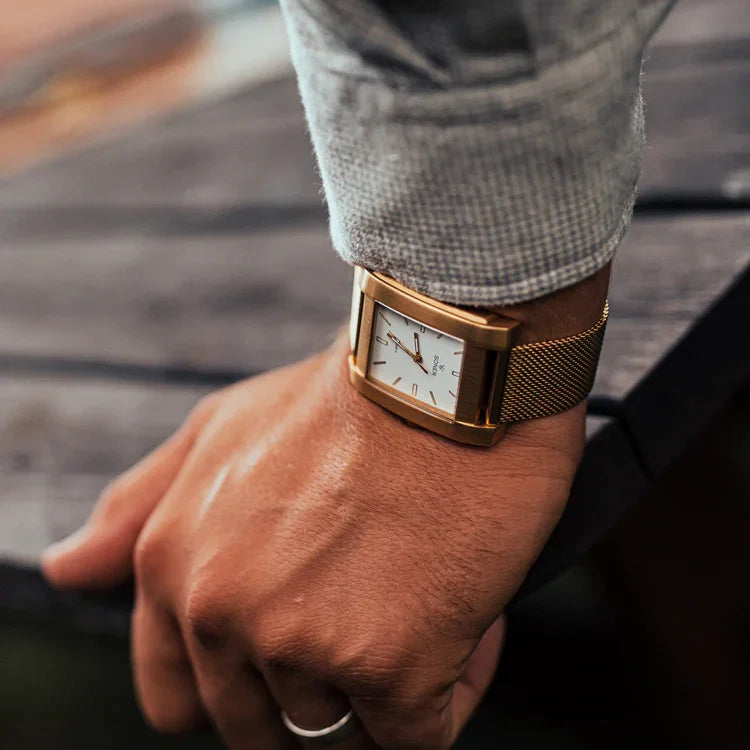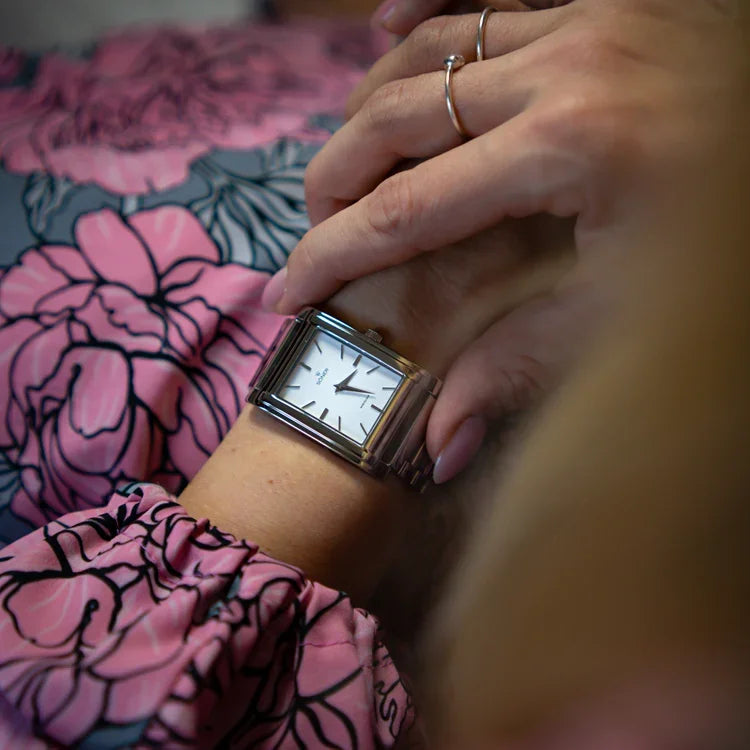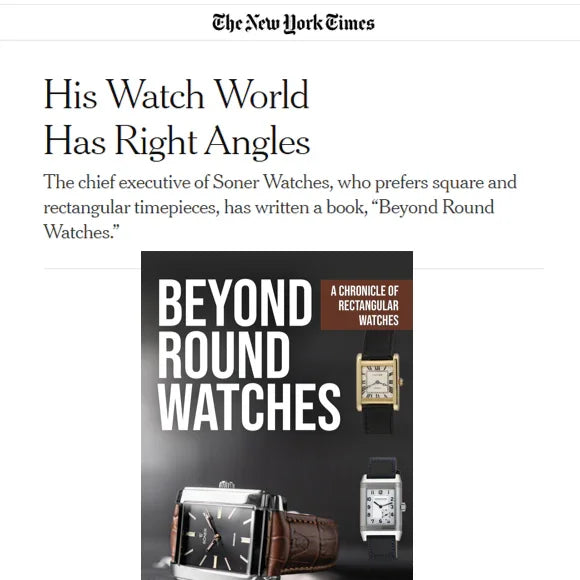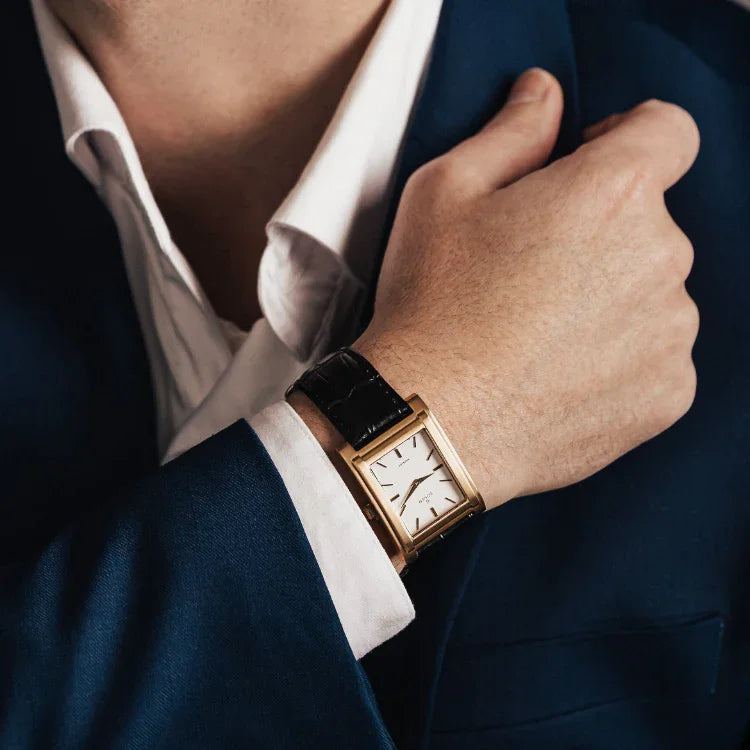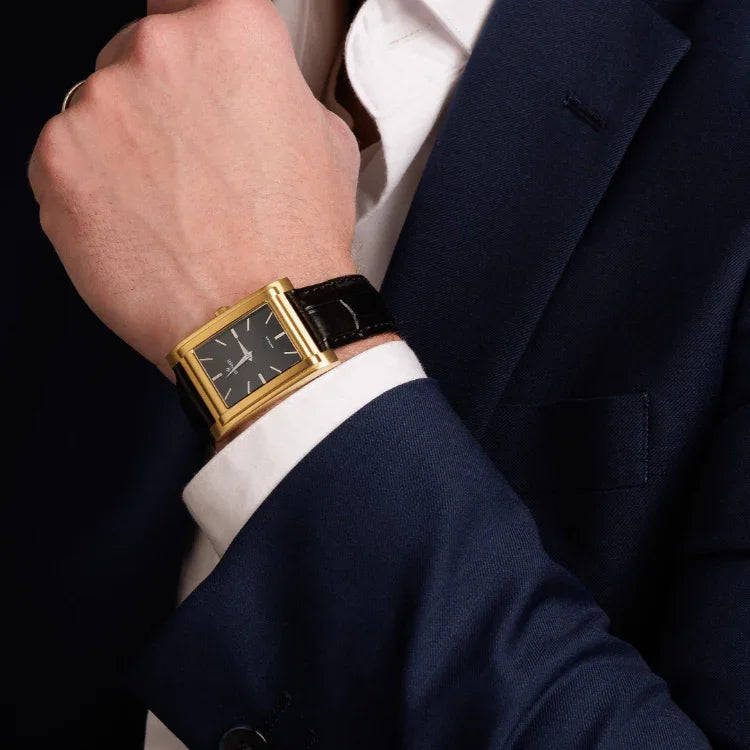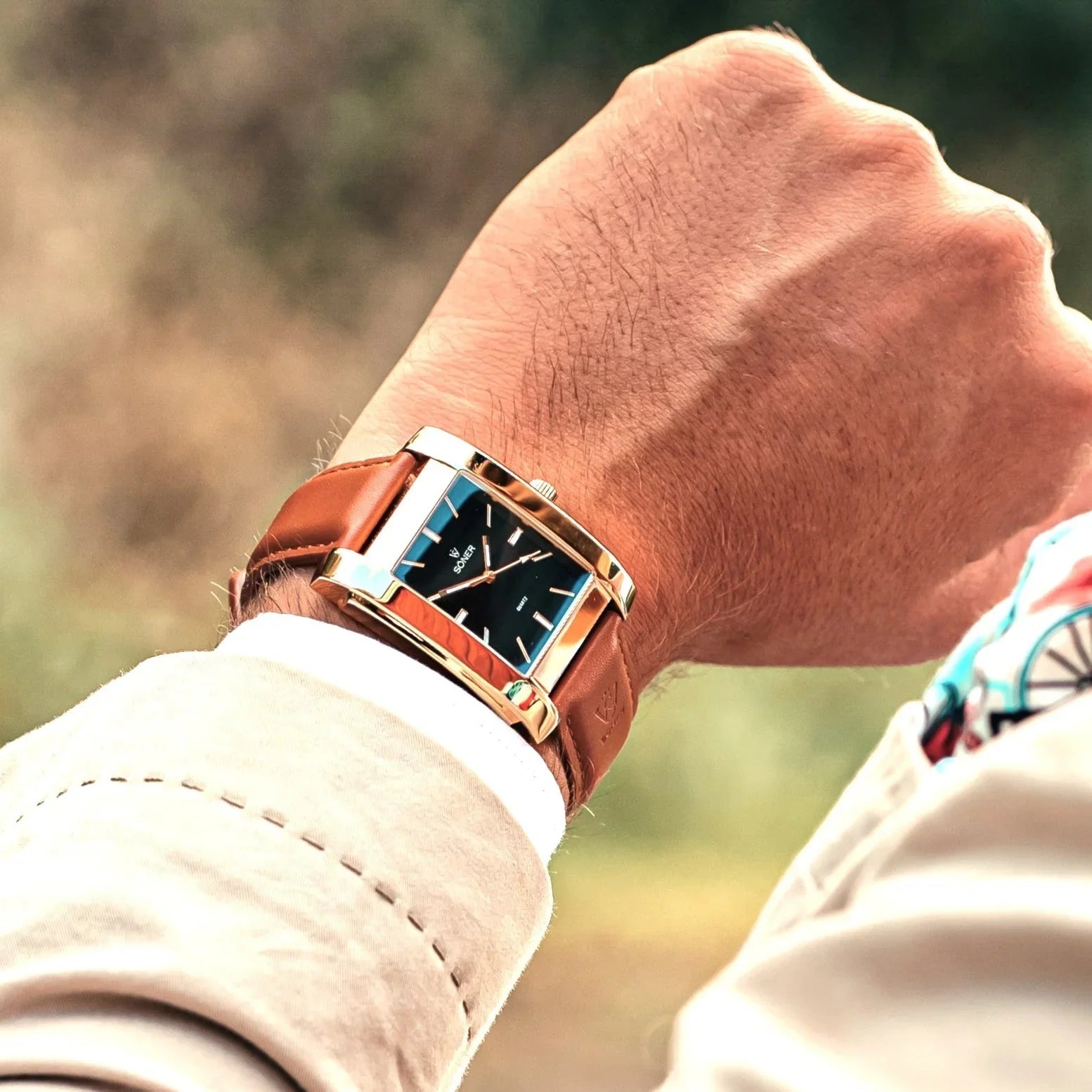Key Takeaways
Table of Contents
À quel point une montre doit-elle être serrée ?
Si nous nous demandons à quel point une montre doit être serrée, cela devient compliqué. Si deux doigts passent, elle est trop lâche, mais si aucun doigt ne passe, alors elle est trop serrée. Nous pourrions nous tromper si nous ne faisons pas attention. Choisir un mauvais ajustement de montre pourrait avoir un impact sur notre sens de la mode et même sur notre santé. Porter une montre trop lâche peut la faire tourner ou bouger constamment. En revanche, porter une montre trop serrée peut provoquer des marques rouges et de la transpiration.
Les différences de types de montres et de tailles de poignets peuvent modifier la question de la façon dont une montre doit être serrée. Les hommes ont tendance à avoir des poignets plus gros et aiment généralement que leurs montres soient lâches. Au contraire, ceux qui ont des poignets fins les préfèrent serrées car elles peuvent facilement glisser de leurs poignets. Les femmes sont généralement plus attirées par les montres rectangulaires conçues pour les femmes.
Les préférences personnelles comptent, bien sûr. Alors que certains préfèrent des montres légèrement lâches, d'autres les préfèrent serrées. Cela peut être une question de sens de la mode ou de confort personnel. Même ainsi, la manière la plus acceptable serait d'utiliser la règle du doigt unique. Pourquoi ? Parce que c'est la règle la plus généralement acceptée.
Même s'il existe une règle concernant le serrage d'une montre, il est aussi important de la combiner avec les préférences personnelles et le style. Les plus sensibles à la mode pourraient opter pour des montres lâches tandis que les plus prudents pourraient choisir des montres serrées. De plus, cela dépend s'il s'agit de montres de luxe, de sport, habillées ou décontractées.
Une Montre Devrait-Elle Bouger Sur Votre Poignet ?
Normalement, il devrait y avoir un peu d'espace entre la montre et le poignet pour permettre un léger mouvement. Si la montre ne peut pas du tout glisser, alors elle est trop serrée. Mais si elle peut glisser librement et tourner, alors elle est trop lâche. Ainsi, il est acceptable qu'une montre bouge, en tenant compte de la règle du doigt unique.
Un léger mouvement sur le poignet permettrait un ajustement ou un déplacement. Mais un glissement excessif signifie qu'il n'y a pas de stabilité. Un glissement excessif peut entraîner une irritation de la peau et la montre peut être endommagée sur des surfaces dures. Alors qu'un léger mouvement permet le confort du poignet, un glissement excessif pourrait être préjudiciable à la montre et au poignet.
Selon le serrage ou le relâchement, le mouvement peut affecter la précision, le confort et l'usure - les montres serrées peuvent restreindre la circulation sanguine. Les montres lâches peuvent affecter la concentration et distraire le porteur ainsi que les autres. Les montres lâches augmentent la friction et peuvent s'endommager plus facilement.
Il est facile de savoir à quel point votre montre doit être serrée en utilisant le test de mouvement. Avec ce test, nous pouvons vérifier si une montre est serrée ou lâche en utilisant la règle du doigt unique et aussi en testant si la montre glisse facilement et tourne.
Combien Une Montre Devrait-Elle Glisser Sur Votre Poignet ?
Une montre devrait glisser si elle se situe entre 5 et 10 millimètres. Ce léger mouvement permet au poignet de respirer sans faire glisser la montre. Et le poignet n'est pas blessé par un serrage excessif. Cela n'est acceptable que si la montre glisse sans tourner ni rebondir.
Lorsqu'une montre glisse de haut en bas, rebondit et tourne autour du poignet, c'est généralement parce qu'elle est trop lâche. Le glissement ne perturbe pas seulement le confort, mais endommage la montre ainsi que la peau.
Vous n'êtes pas sûr que votre montre soit bien ajustée ?
Apprenez la simple règle du doigt pour obtenir un ajustement parfait—confortable, élégant et sûr pour un port quotidien.
Maîtrisez l'ajustement parfait de la montre rectangulaireQuels sont les signes que votre montre est trop serrée ?
Parmi les signes d'une montre trop serrée au poignet, on trouve des marques, de l'inconfort, de la transpiration et des rougeurs sur la peau. Une montre bien portée ne doit pas causer d'inconfort.
Porter des montres serrées pendant de longues périodes peut provoquer engourdissements, picotements ou gonflements de la main. Pour assurer une circulation sanguine équilibrée et un confort physique, il est important d'avoir un ajustement de montre qui ne soit pas serré.
Les allergies aux matériaux comme les métaux et les bracelets synthétiques peuvent provoquer des éruptions cutanées et des irritations. Cela est plus probable avec des montres serrées.

Nos montres rectangulaires vous offrent cependant le confort et la flexibilité dont vous avez besoin. Choisir des montres plus durables et confortables signifie moins d'irritations et une montre sécurisée qui s'adapte à votre style de vie.
À quel point une montre doit-elle être lâche pour qu'elle s'ajuste correctement ?
Une montre qui repose et bouge sur le poignet sans glisser serait considérée comme suffisamment lâche. Elle ne doit pas tourner ni rebondir, mais doit respecter la règle du doigt index.
Choisir un mauvais ajustement de montre peut affecter notre sens de la mode et même notre santé. Cependant, les montres trop lâches ont tendance à beaucoup glisser et peuvent paraître maladroites. Tandis que les montres trop serrées causent inconfort et usure. La montre idéale allie confort et praticité.
Les montres connectées lâches peuvent perturber les relevés de fréquence cardiaque et de pression corporelle. Les montres mécaniques lâches peuvent entraîner des désalignements et une usure interne.
Pourquoi les gens portent-ils délibérément leur montre lâche ?
Selon la société, le contexte ou la personne, les montres sont portées lâches pour différentes raisons. Dans certaines sociétés, cela reflète un état d'esprit confortable et heureux. Dans certains contextes, cela fait partie de la personnalité de la personne de vivre de manière décontractée. D'autres portent leur montre lâche parce que cela correspond à un certain sens de la mode ou à une époque.
Malgré ces raisons, d'autres portent leur montre lâche à cause de la chaleur et de la transpiration. Les personnes à la peau sensible préfèrent porter leur montre lâche. Il en va de même pour celles qui vivent dans des régions très chaudes ou qui sont facilement affectées par la chaleur.
Arrêtez de deviner l'ajustement de votre montre
Des types de bracelets aux variations saisonnières du poignet, découvrez comment ajuster votre montre pour un confort et une fonctionnalité durables.
Trouvez l'ajustement idéal pour votre montre rectangulaireComment une montre en métal doit-elle s'ajuster par rapport à d'autres bracelets ?
Alors que les bracelets en cuir et en silicone sont plus flexibles et adaptables, les bracelets de montres en métal conservent une forme fixe et nécessitent un dimensionnement précis. Les montres en métal conviennent mieux aux événements formels tandis que les bracelets en cuir et en silicone peuvent convenir à des événements plus décontractés et informels.
Parce que les montres en métal ne s'étirent pas, elles doivent être dimensionnées avec soin pour éviter l'inconfort. Une montre en métal trop serrée peut pincer et finir par restreindre la circulation sanguine. Cela signifie qu'un bracelet en métal serré est plus dangereux qu'un bracelet en silicone ou en cuir. Il est important de bien le dimensionner pour assurer confort et flexibilité.
En raison de sa construction, une montre en métal est plus susceptible de pincer la peau. Cela peut arriver si elle est trop serrée. En revanche, si elle est trop lâche, elle peut perdre du poids et tourner. Pendant la rotation, elle peut attraper des poils corporels et provoquer de la douleur.
Les montres en métal sont-elles censées être lâches ?
Même si la culture hip-hop dans les clips musicaux le suggère, les montres en métal ne sont pas censées être lâches. Mais un excès de lâcheté peut entraîner des rebonds, des glissements, et même endommager la montre. Idéalement, le bracelet ne doit pas pincer ni restreindre les mouvements. Mais si la montre glisse ou rebondit, alors elle est probablement trop lâche.
Pour que des ajustements de maillons soient nécessaires, la montre doit être serrée ou laisser des marques. La plupart des montres ont des maillons amovibles qui peuvent être retirés ou ajoutés. Si la montre est aussi trop grande, un technicien horloger peut la redimensionner pour qu'elle s'adapte au poignet. Même s'il peut être plus facile de redimensionner un bracelet plus grand.
Quelle est la règle du doigt pour l'ajustement d'une montre ?
Si l'index peut glisser confortablement entre la montre et le poignet, alors l'ajustement est confortable. C'est la règle du doigt. En revanche, s'il est plus lâche et permet plus de liberté de mouvement, alors c'est la règle des deux doigts. Ces deux techniques aident à déterminer si une montre est trop serrée ou trop lâche. Une montre trop serrée peut provoquer des irritations cutanées tandis qu'une montre trop lâche peut glisser.
La règle du doigt est assez facile à comprendre et à utiliser :
- Attachez votre montre à votre poignet
- Essayez de glisser un doigt (de préférence votre index)
- Si votre doigt passe confortablement, la montre est bien ajustée
- Si vous avez du mal à faire passer votre doigt, le bracelet peut être trop serré
La règle du doigt n'est généralement pas la solution à tous les problèmes d'ajustement car il existe différentes façons et raisons pour lesquelles les gens portent des montres. Les athlètes et les patients peuvent nécessiter des bracelets plus serrés tandis que ceux de l'industrie de la mode pourraient préférer un ajustement plus lâche. Des facteurs environnementaux comme les températures élevées dans certaines régions peuvent aussi influencer le port de bracelets plus lâches. Cela peut aussi dépendre de la montre - métal, cuir ou silicone. Même si la règle du doigt est généralement acceptable, d'autres raisons peuvent amener les gens à porter leur montre différemment.
Votre montre est-elle trop serrée ou trop lâche ?
Évitez l'inconfort, les irritations cutanées et les dommages à la montre grâce à nos conseils simples pour vérifier l'ajustement de chaque style de bracelet.
Vérifiez maintenant l'ajustement de votre montreOù exactement une montre doit-elle se situer sur votre poignet ?
Porter la montre au-dessus de l'os du poignet est idéal pour le confort et la fonctionnalité. Cette position permet à la montre de rester en place sans causer d'inconfort tout au long de la journée. Porter la montre plus haut évite également les glissements et rotations excessifs, surtout lors d'activités nécessitant beaucoup de mouvement. Qu'il s'agisse d'un bracelet en métal, silicone ou cuir, ce positionnement offre un meilleur contrôle et une meilleure stabilité.
Même si porter une montre sous l'os du poignet peut sembler inoffensif, cela peut entraîner des problèmes de confort et de stabilité. Ce placement augmente la probabilité que la montre tourne ou rebondisse lors des mouvements et des activités intenses. La pression et la friction répétées peuvent causer des douleurs et des marques sur la peau. Cela peut être pire pour les personnes qui portent leur montre pendant de longues périodes. Pour plus de confort, il est préférable de porter la montre au-dessus de l'os du poignet.
Le placement de la montre tend à varier selon le type et la fonction. Cela dit, la porter au-dessus de l'os du poignet est généralement la méthode la plus acceptable. Comprendre comment le placement de la montre peut affecter l'ajustement et la fonction aidera à la flexibilité et au confort :
- Les montres de sport peuvent se porter plus haut sur le poignet.
- Les montres habillées se portent plus lâches pour des raisons esthétiques.
Quels autres facteurs influencent la façon dont une montre doit s'ajuster ?
L'ajustement d'une montre peut être fortement influencé par les changements saisonniers. Par temps chaud, l'augmentation de la chaleur et de l'humidité provoque un léger gonflement du poignet. Par temps froid, le poignet peut légèrement se contracter, ce qui peut faire glisser ou tourner la montre. Ces fluctuations ne sont perceptibles que chez les personnes qui portent leur montre quotidiennement. Pour un confort constant, il est préférable d'utiliser des montres avec des bracelets ou des fermoirs ajustables. Prendre en compte les variations saisonnières peut aider à réduire les problèmes comme l'inconfort et les irritations cutanées.
Qu'il soit en cuir, silicone ou métal, le matériau de votre bracelet de montre joue un rôle important dans le confort que vous ressentez en portant votre montre. Alors que les bracelets en caoutchouc et silicone offrent une meilleure résistance à l'humidité et aux variations de température, ils peuvent paraître collants ou moites en cas d'humidité élevée. Les montres en métal, en revanche, peuvent se dilater par temps chaud et sembler très froides par temps froid. Choisir le bon bracelet garantit votre confort et votre flexibilité quel que soit le temps.

La forme du poignet et la structure osseuse ont une grande influence sur la façon dont une montre s'ajuste. Les montres sont plus confortables sur des poignets plus plats. Les poignets plus ronds posent un problème de stabilité et de confort.
Certaines personnes préfèrent une sangle serrée pour la stabilité et la précision. D'autres optent pour une sangle plus lâche, privilégiant le confort et la liberté de mouvement. Essayer différents types de sangles et styles de montres peut vous aider à trouver la montre la plus confortable.


